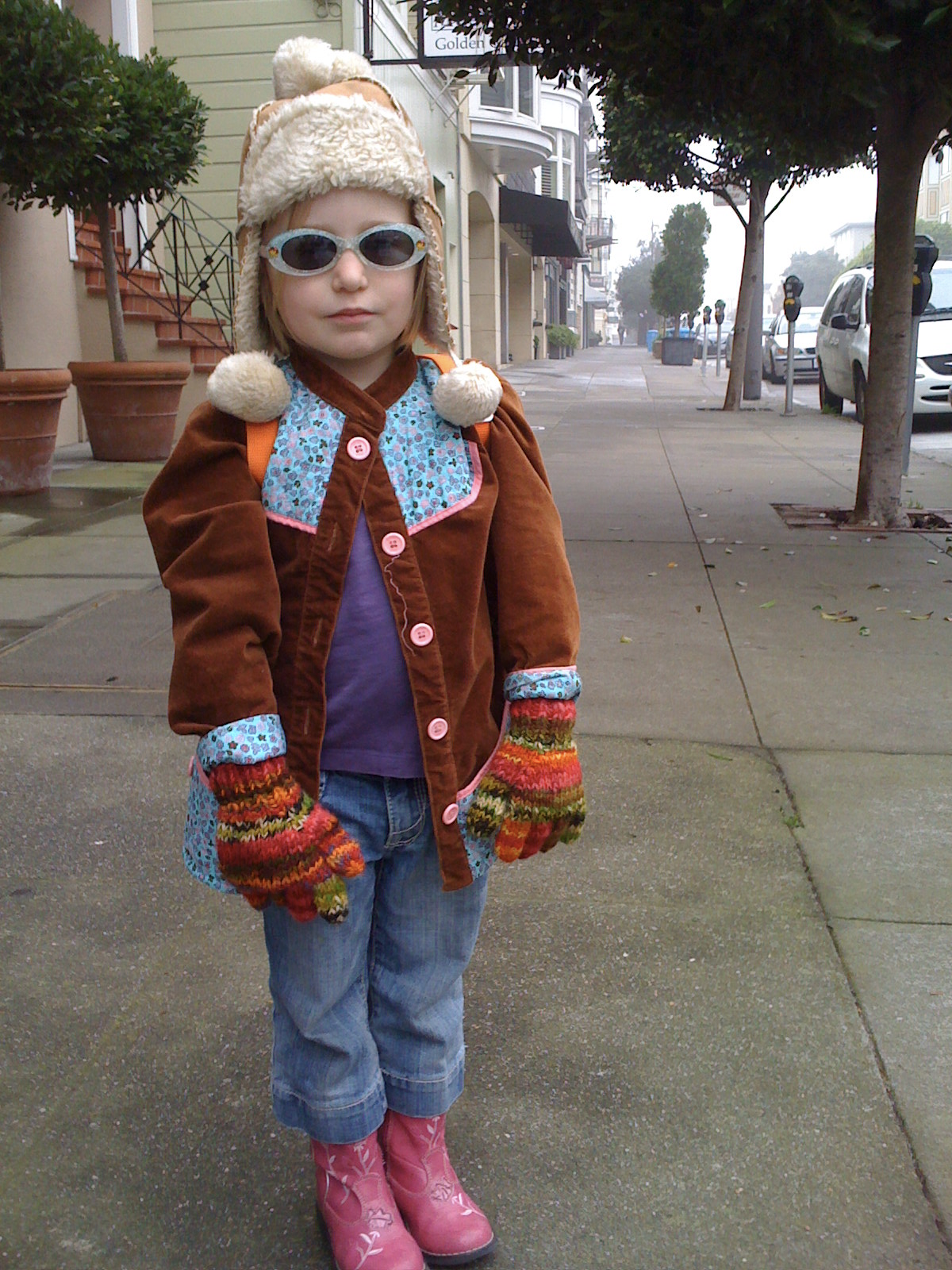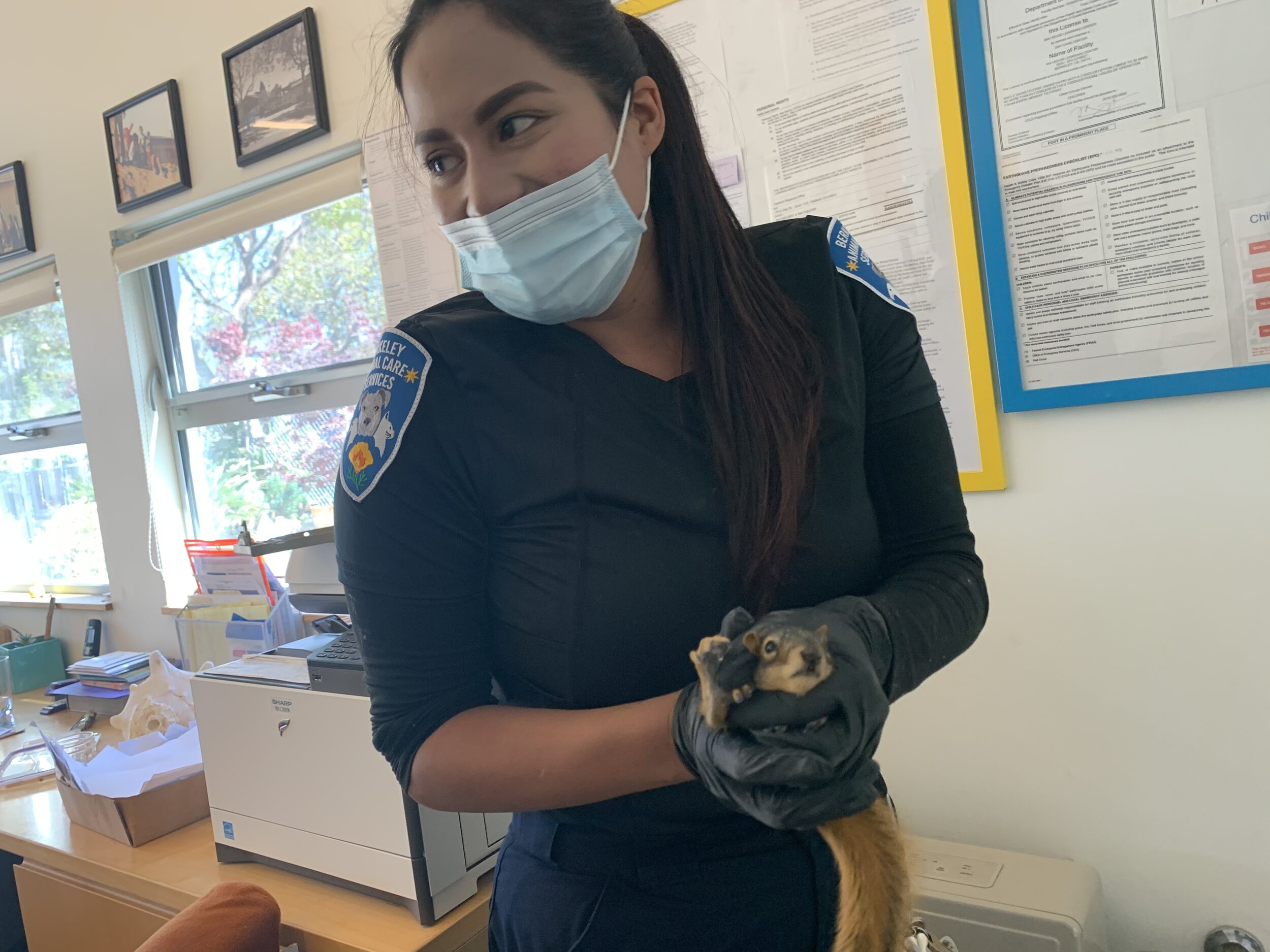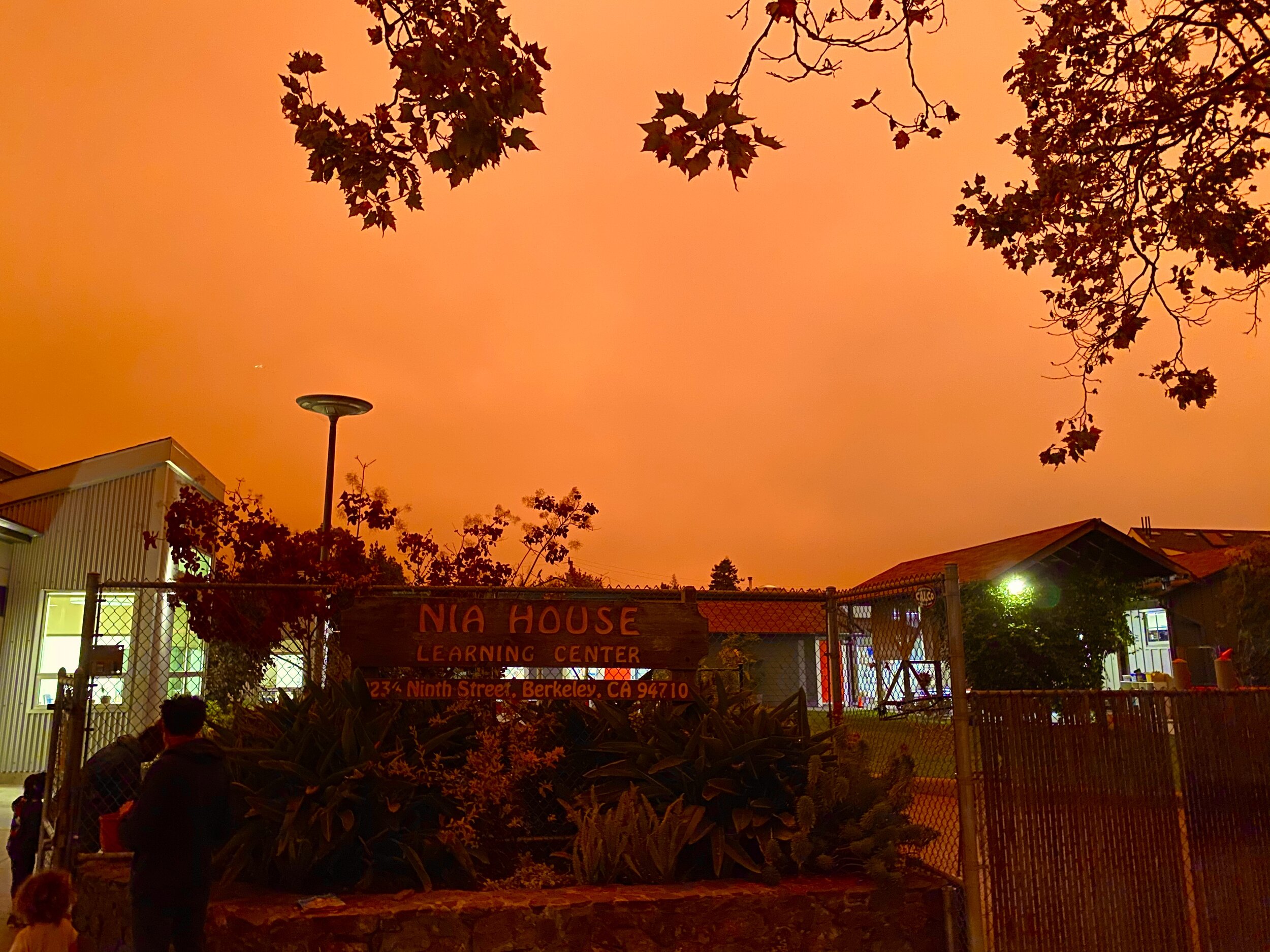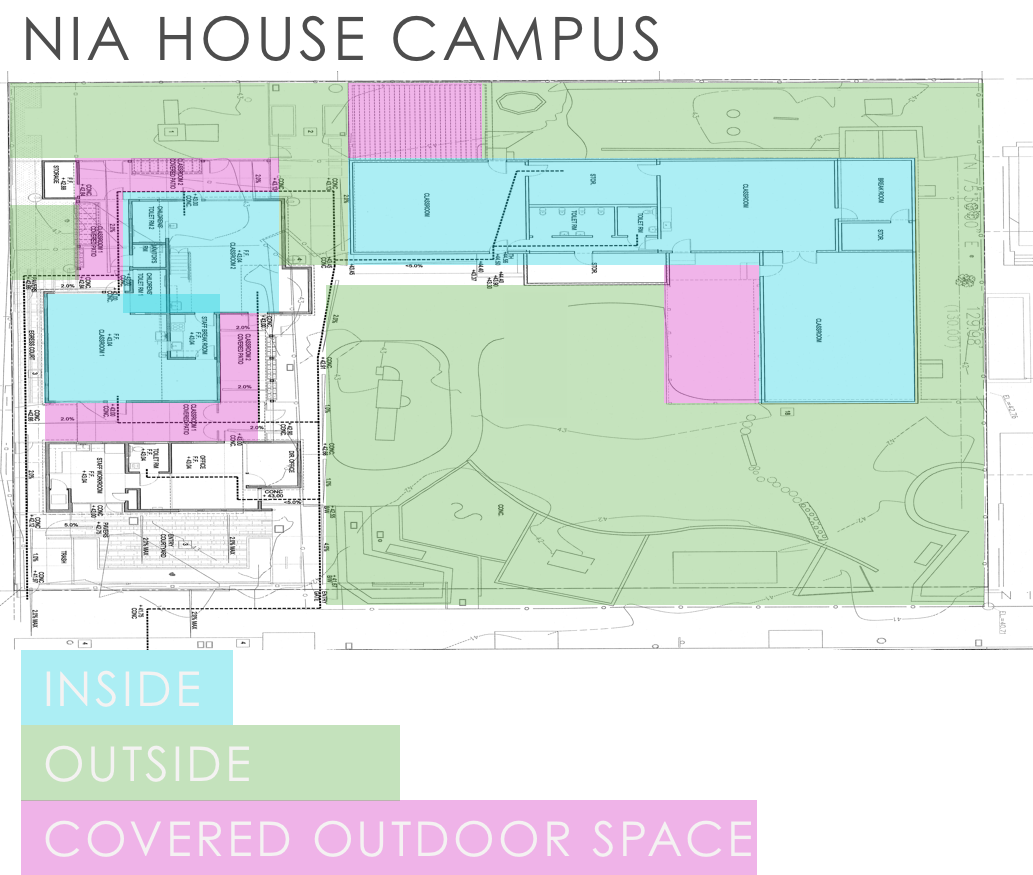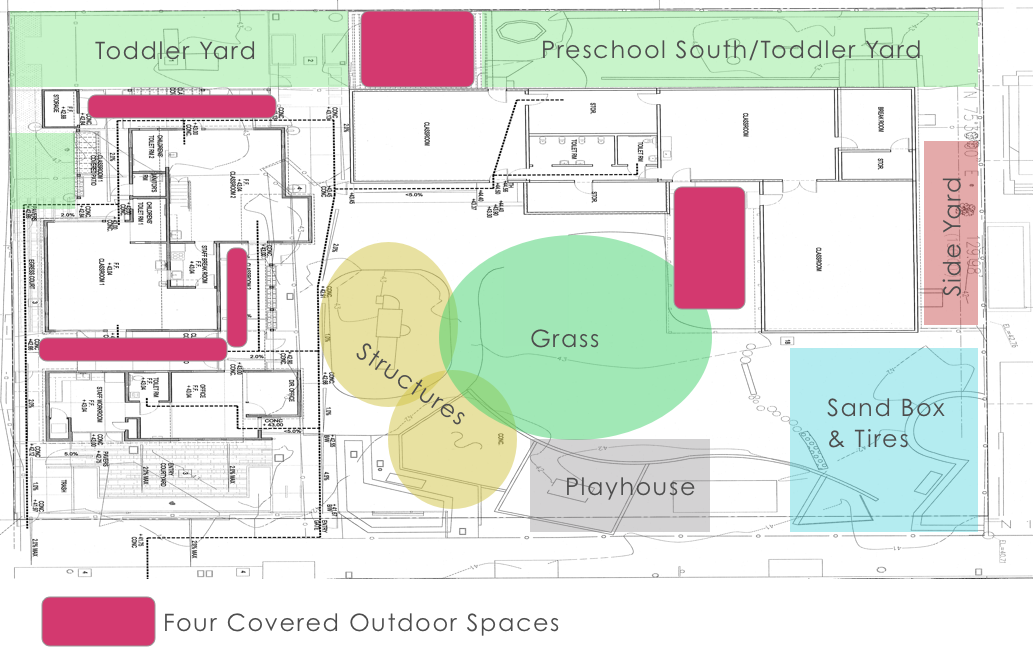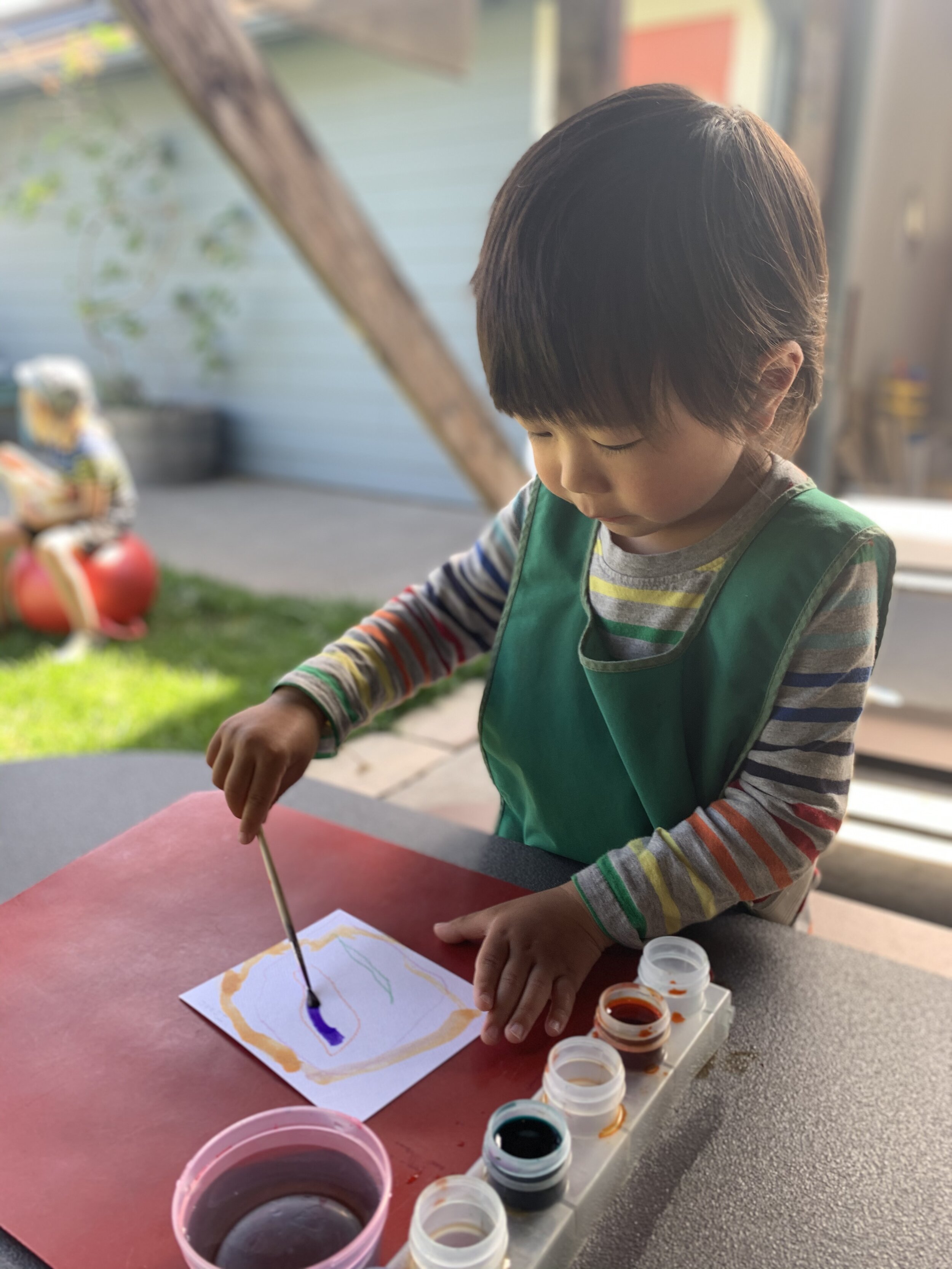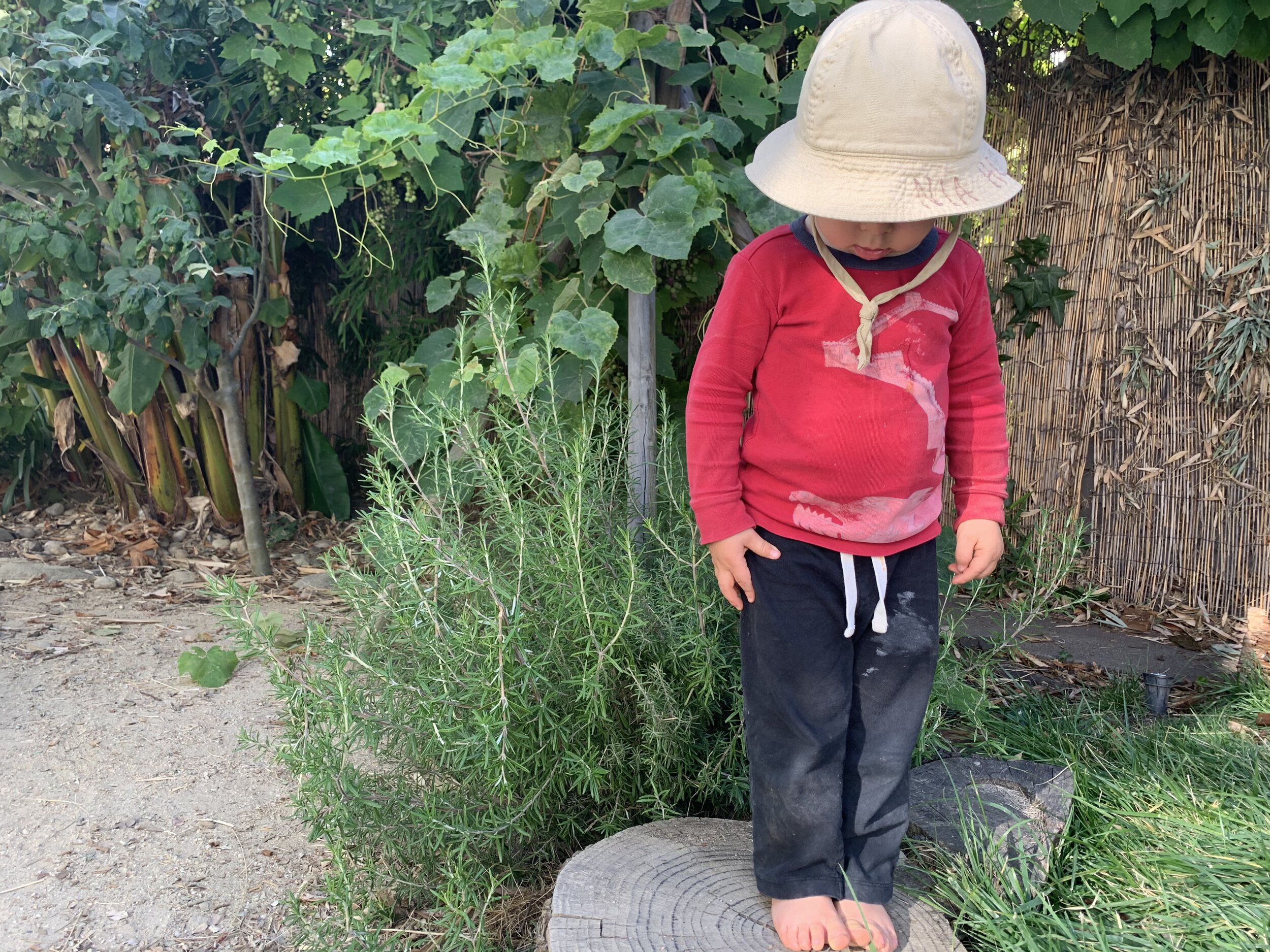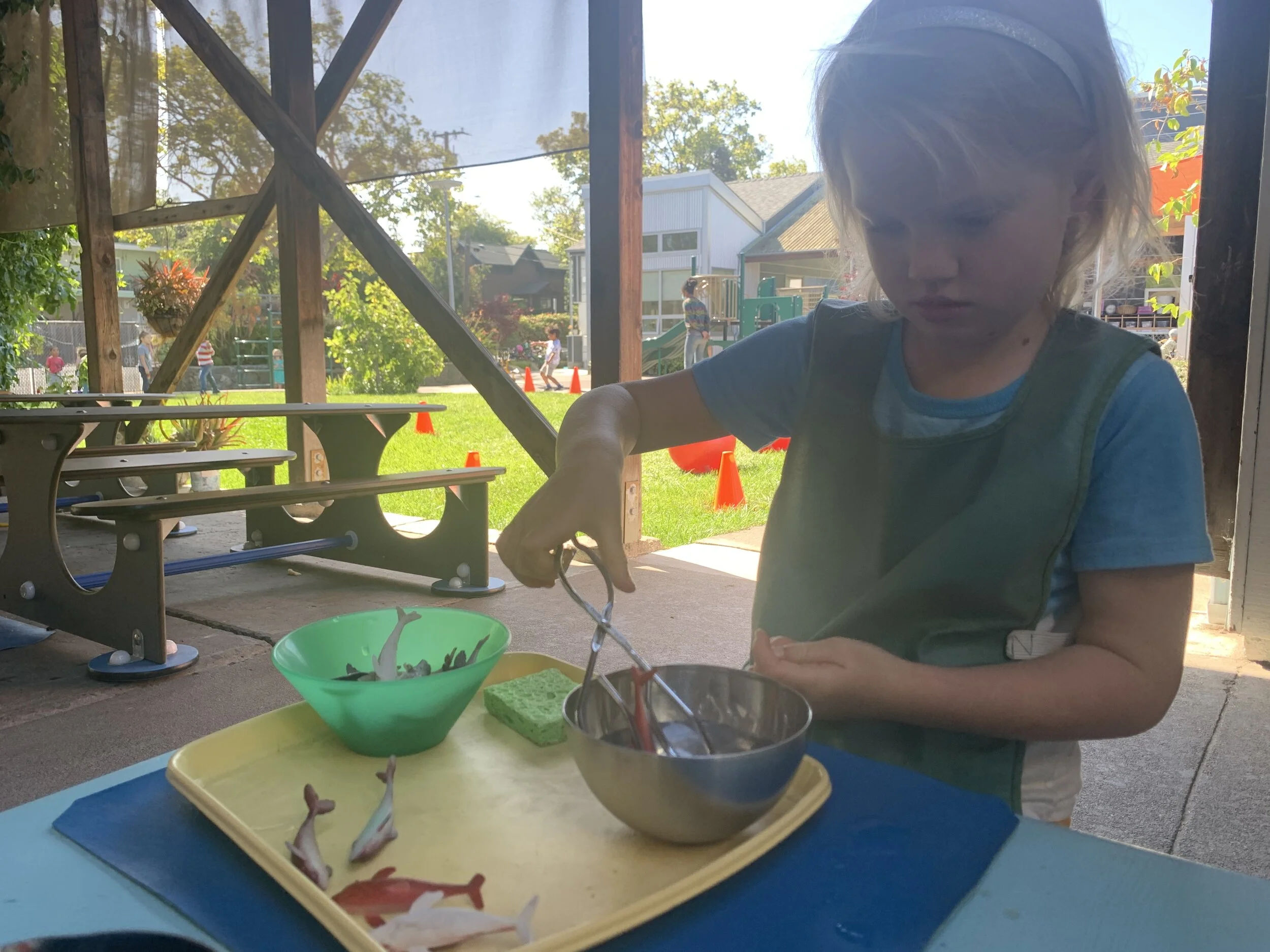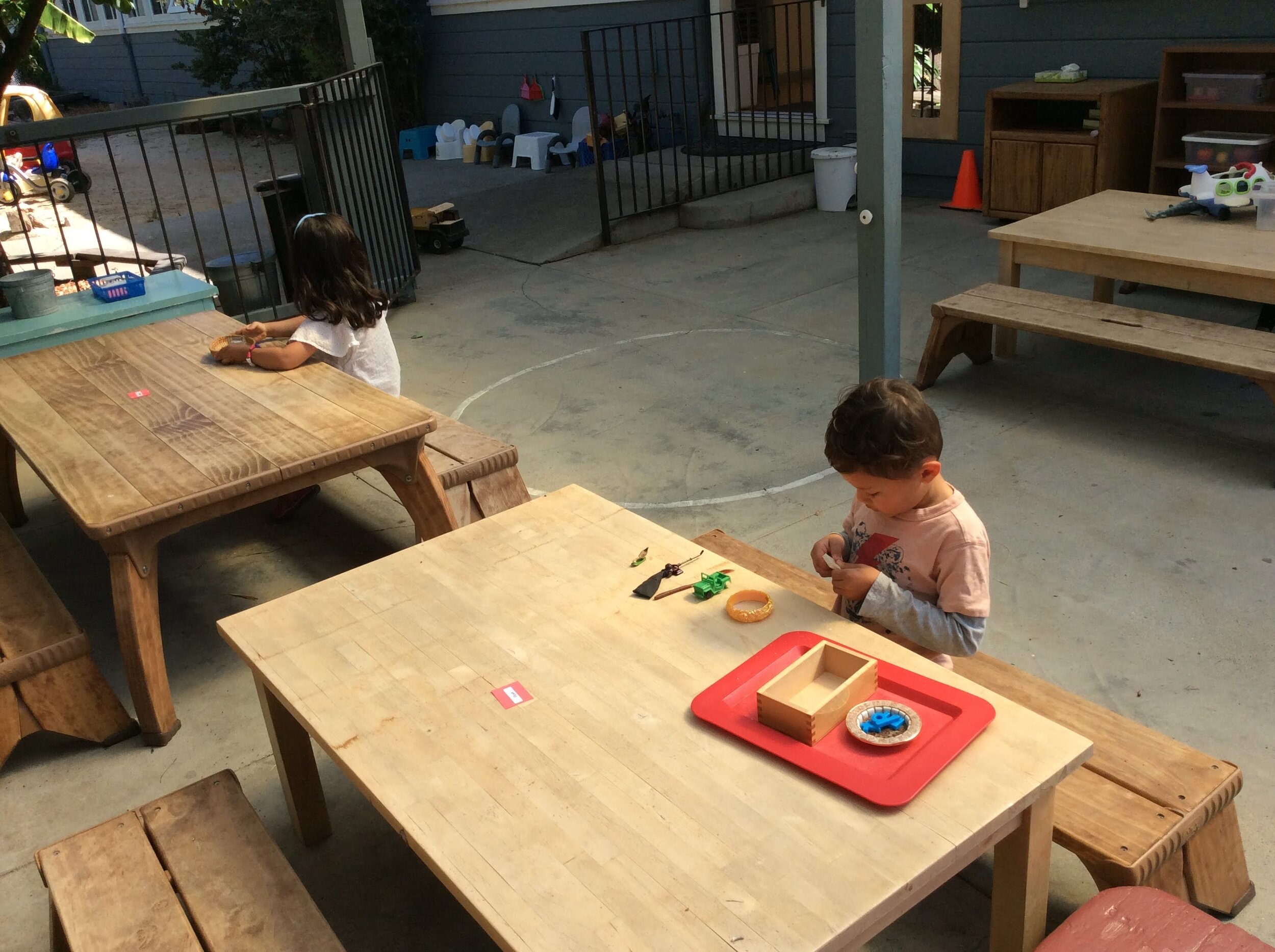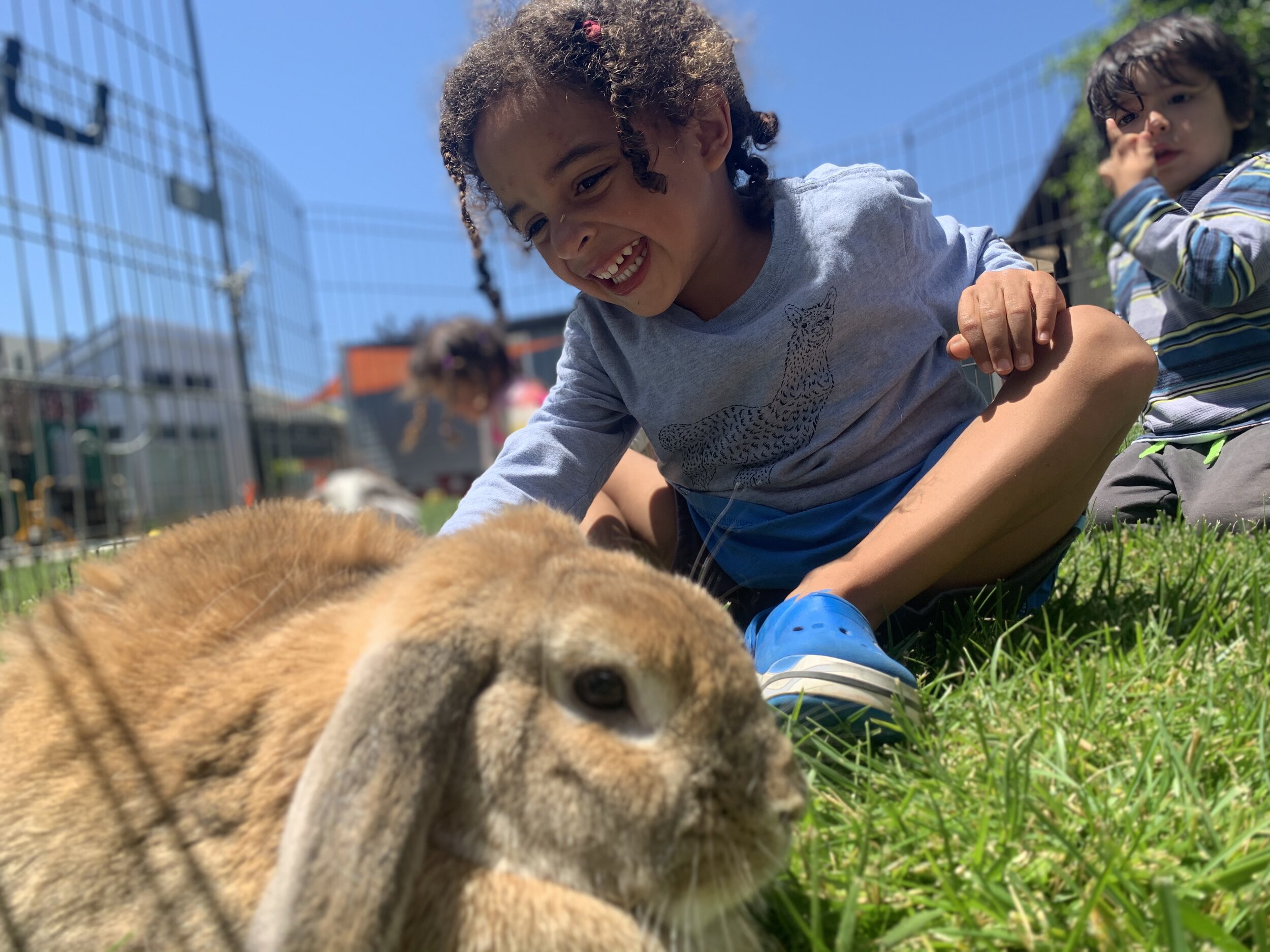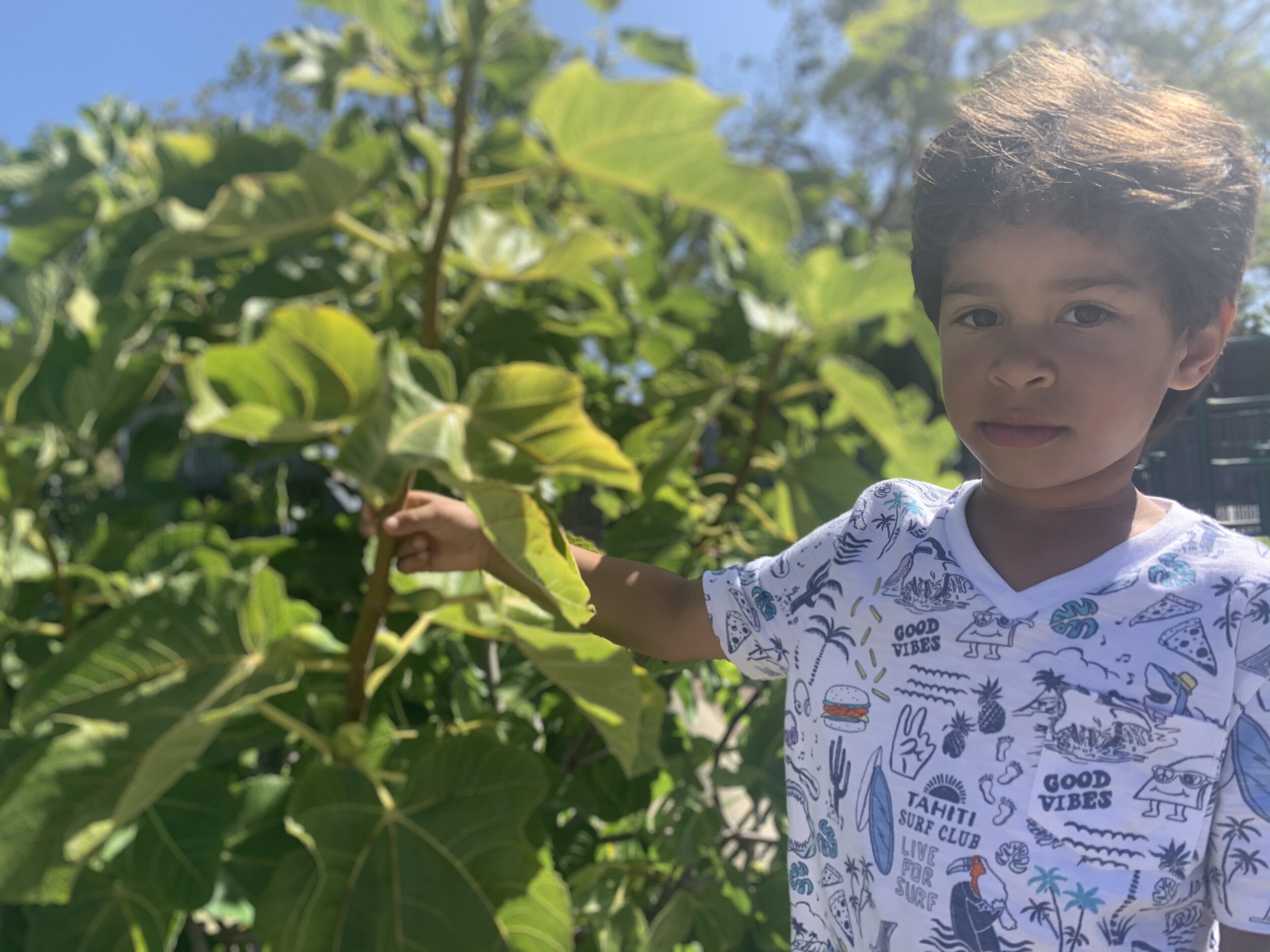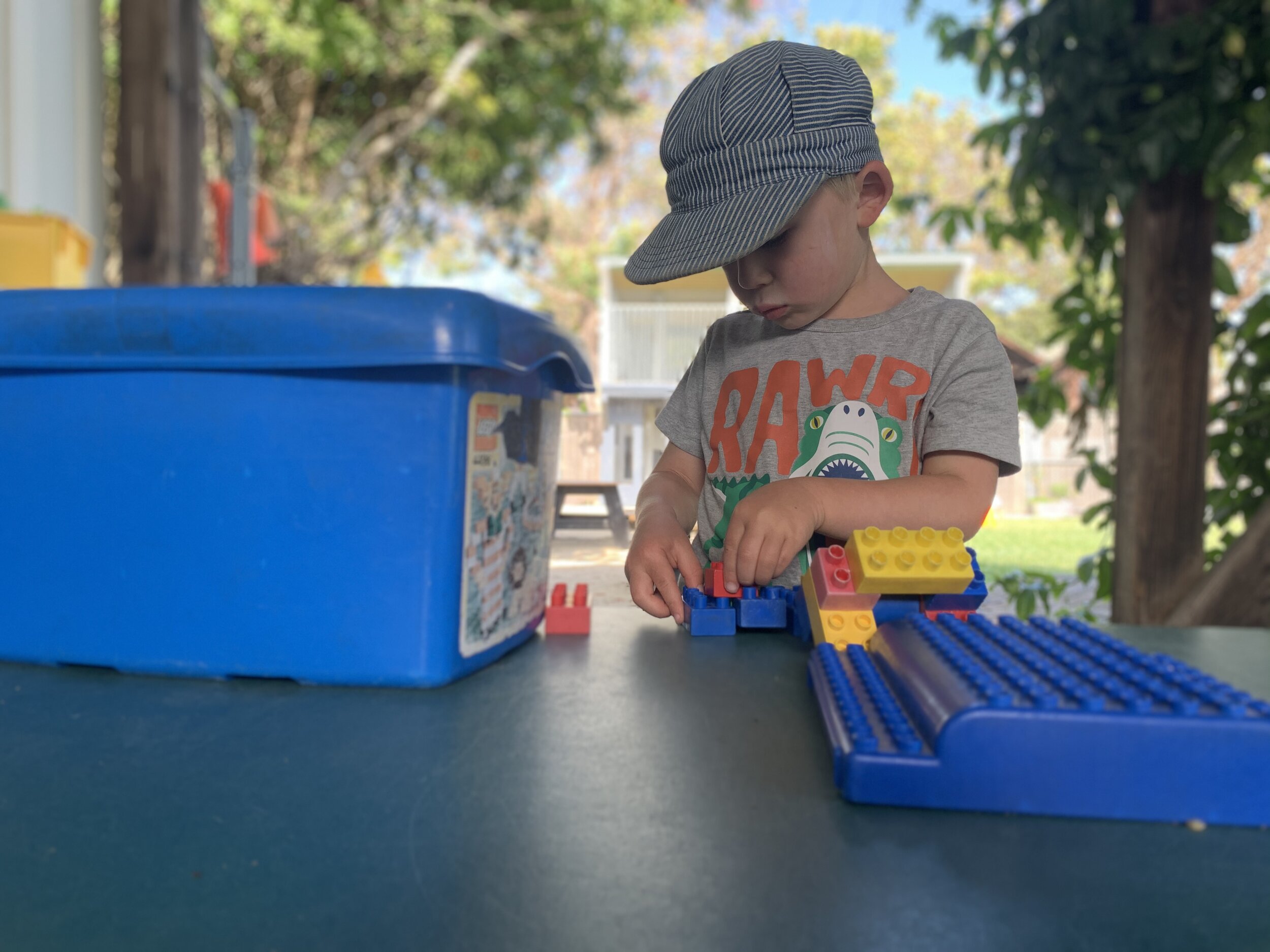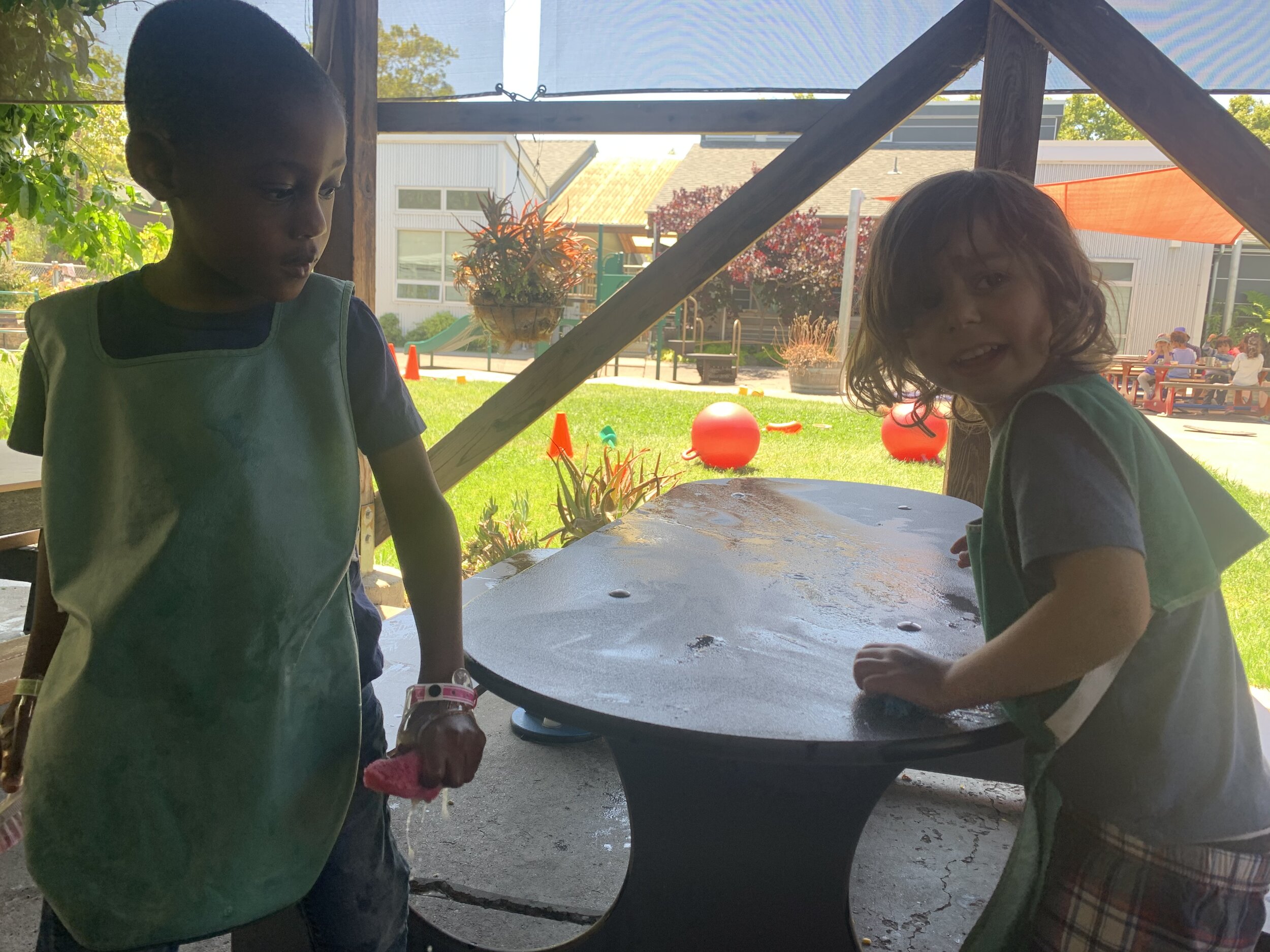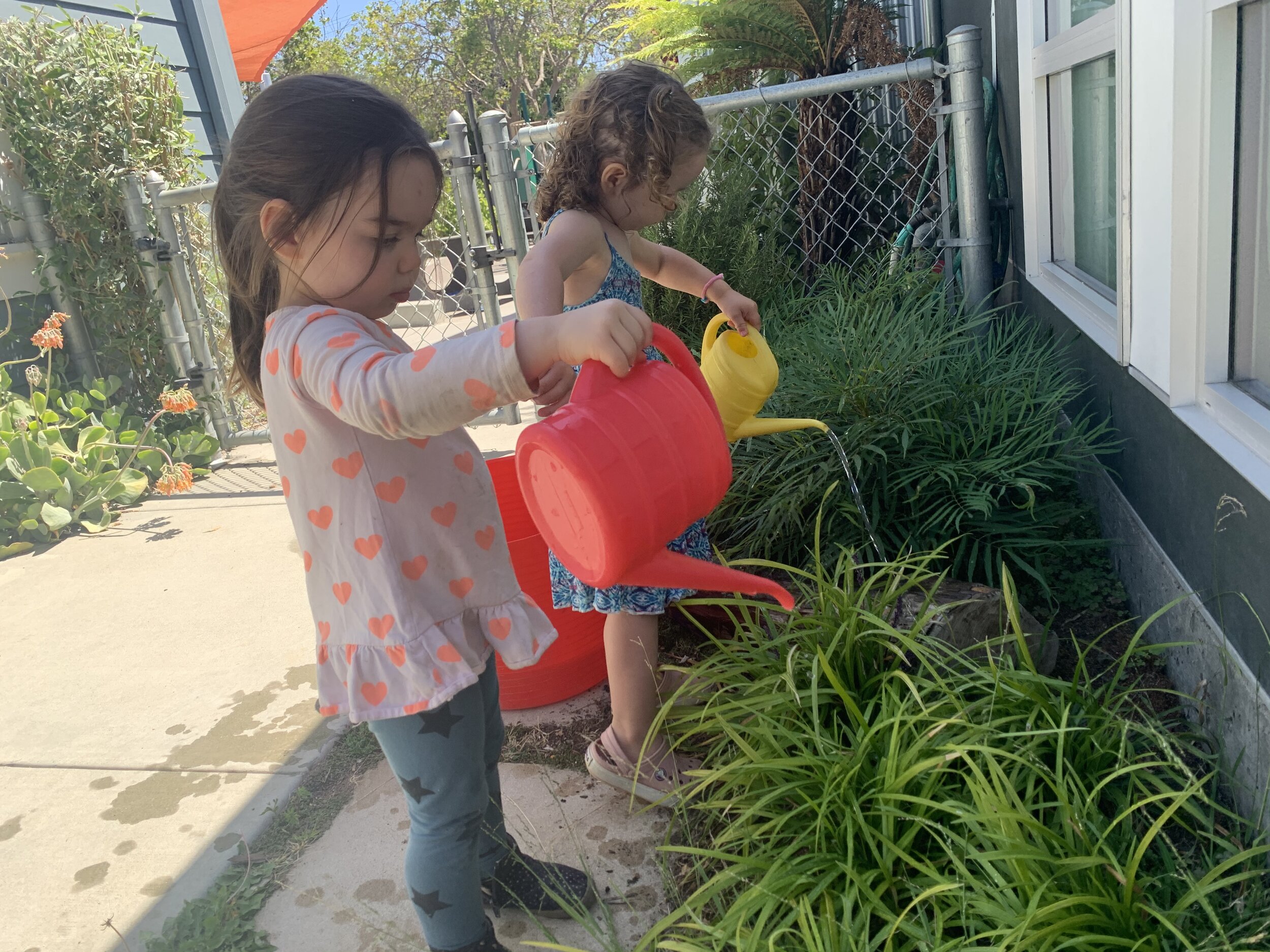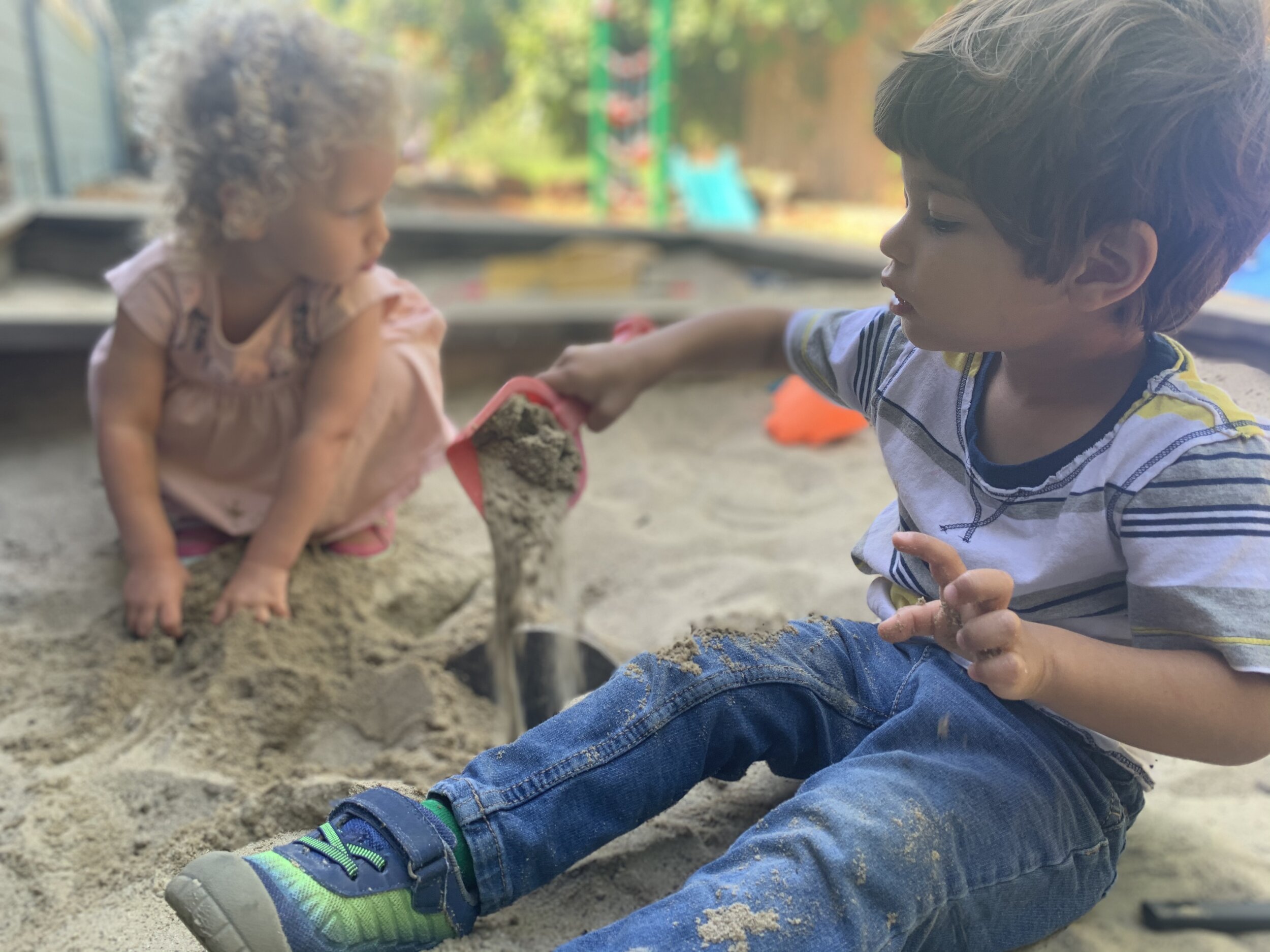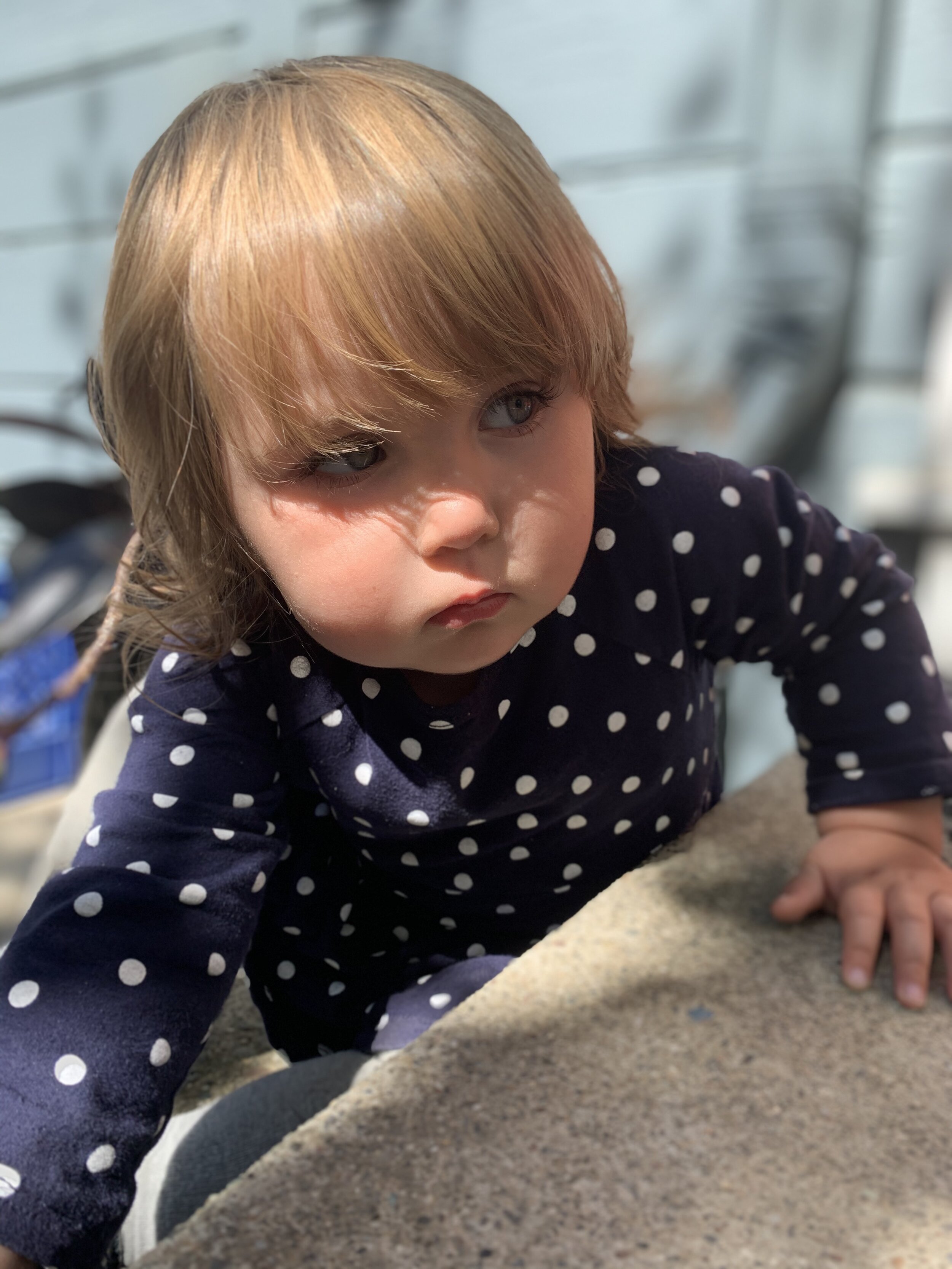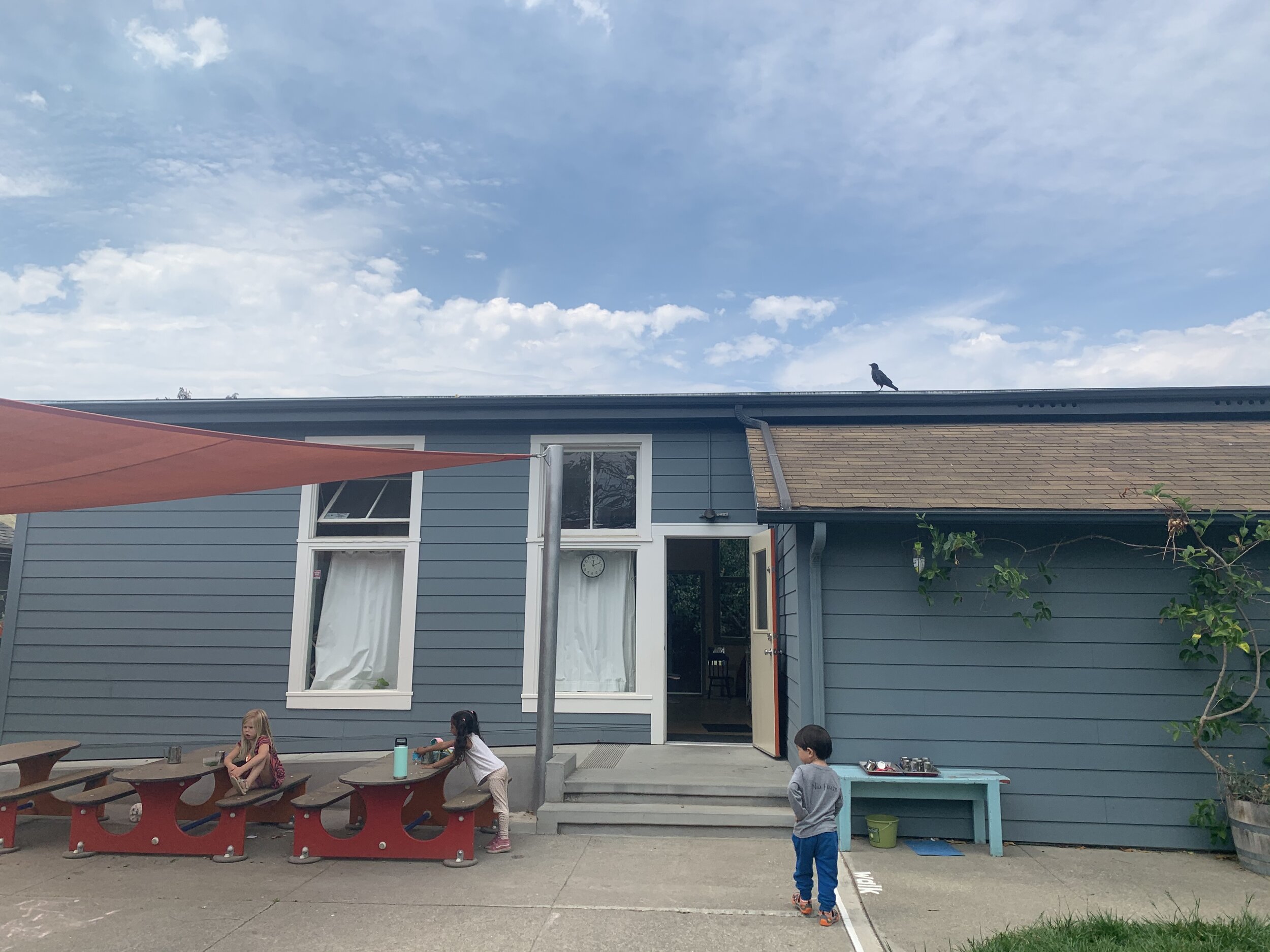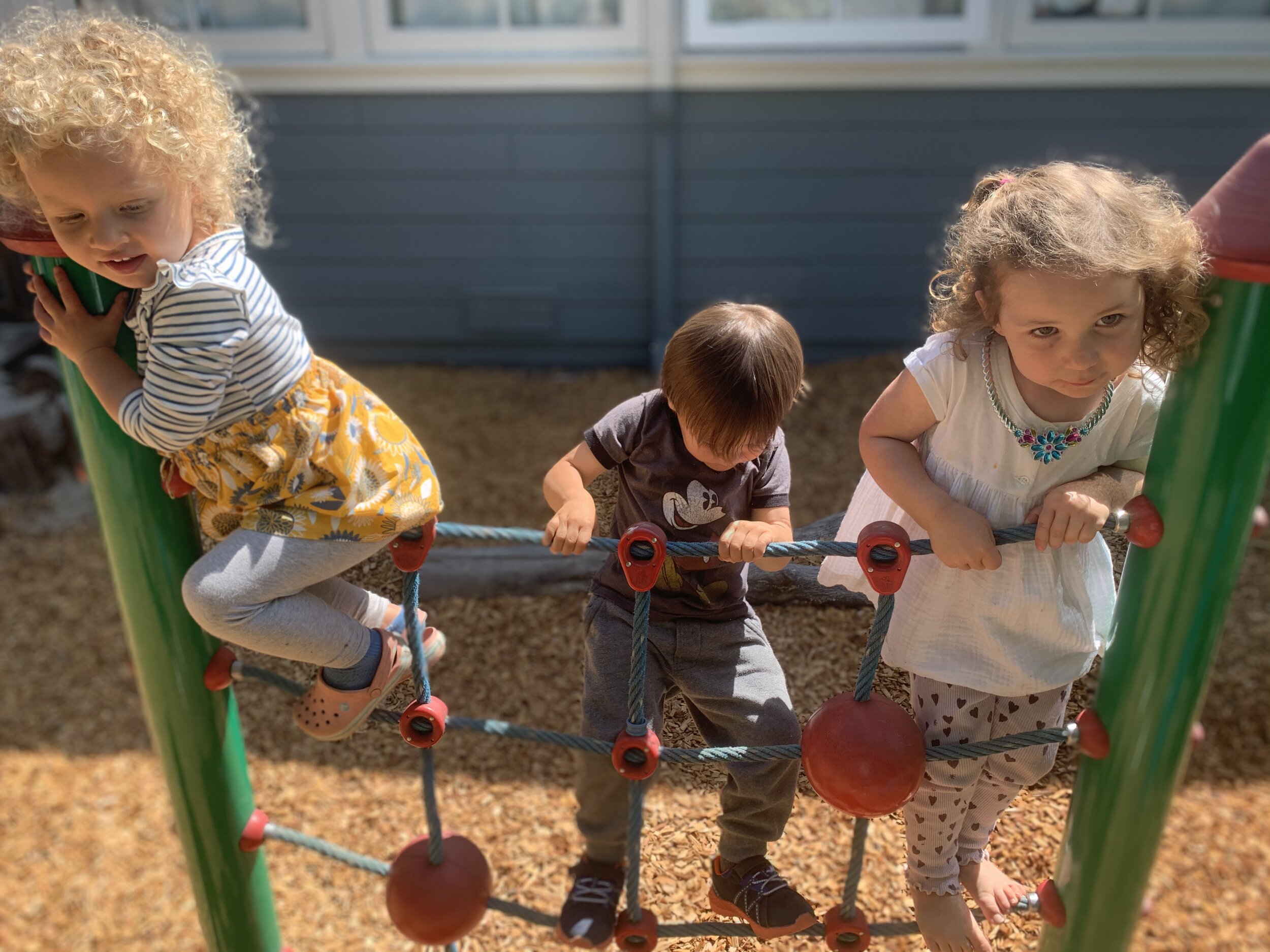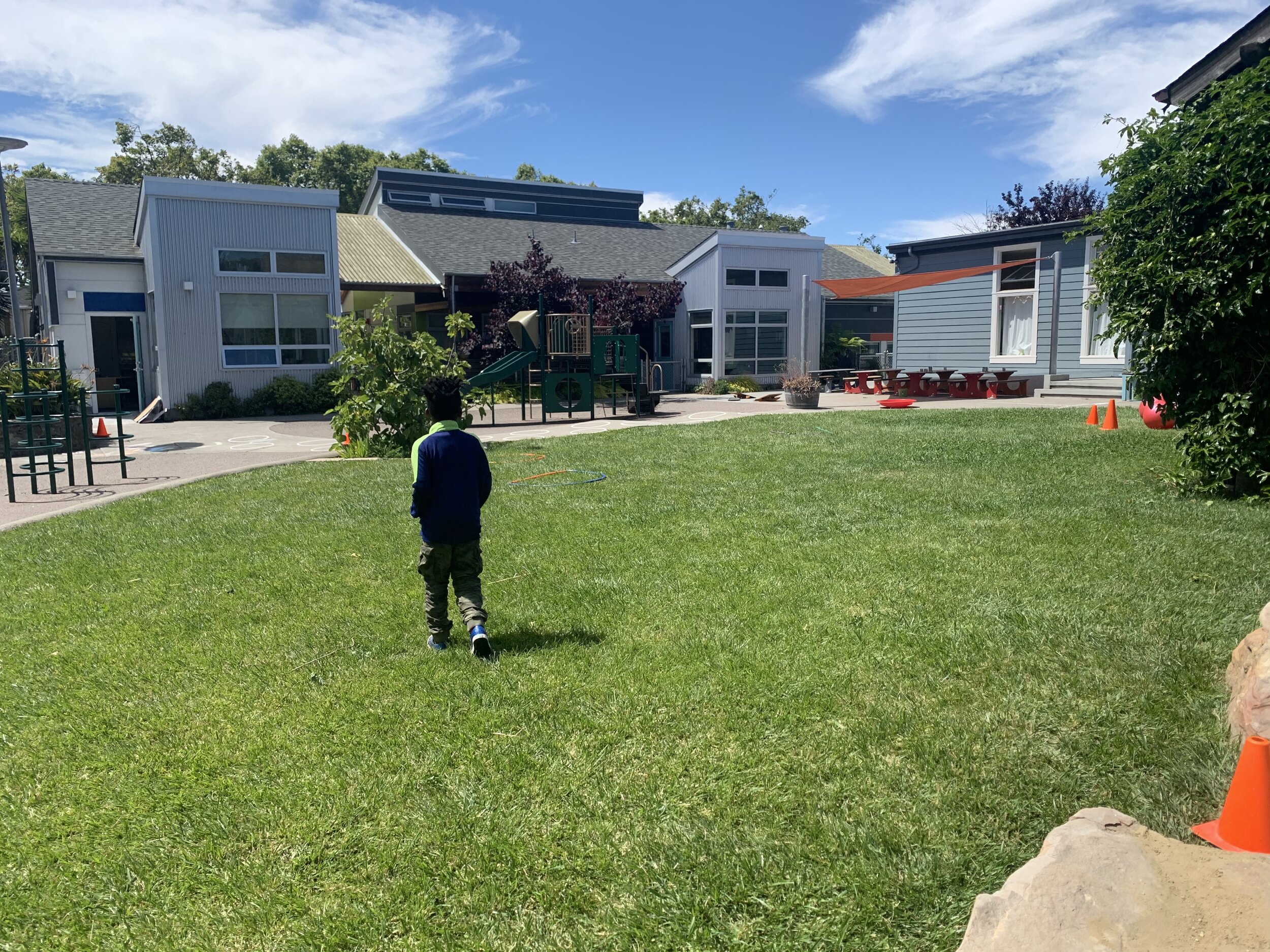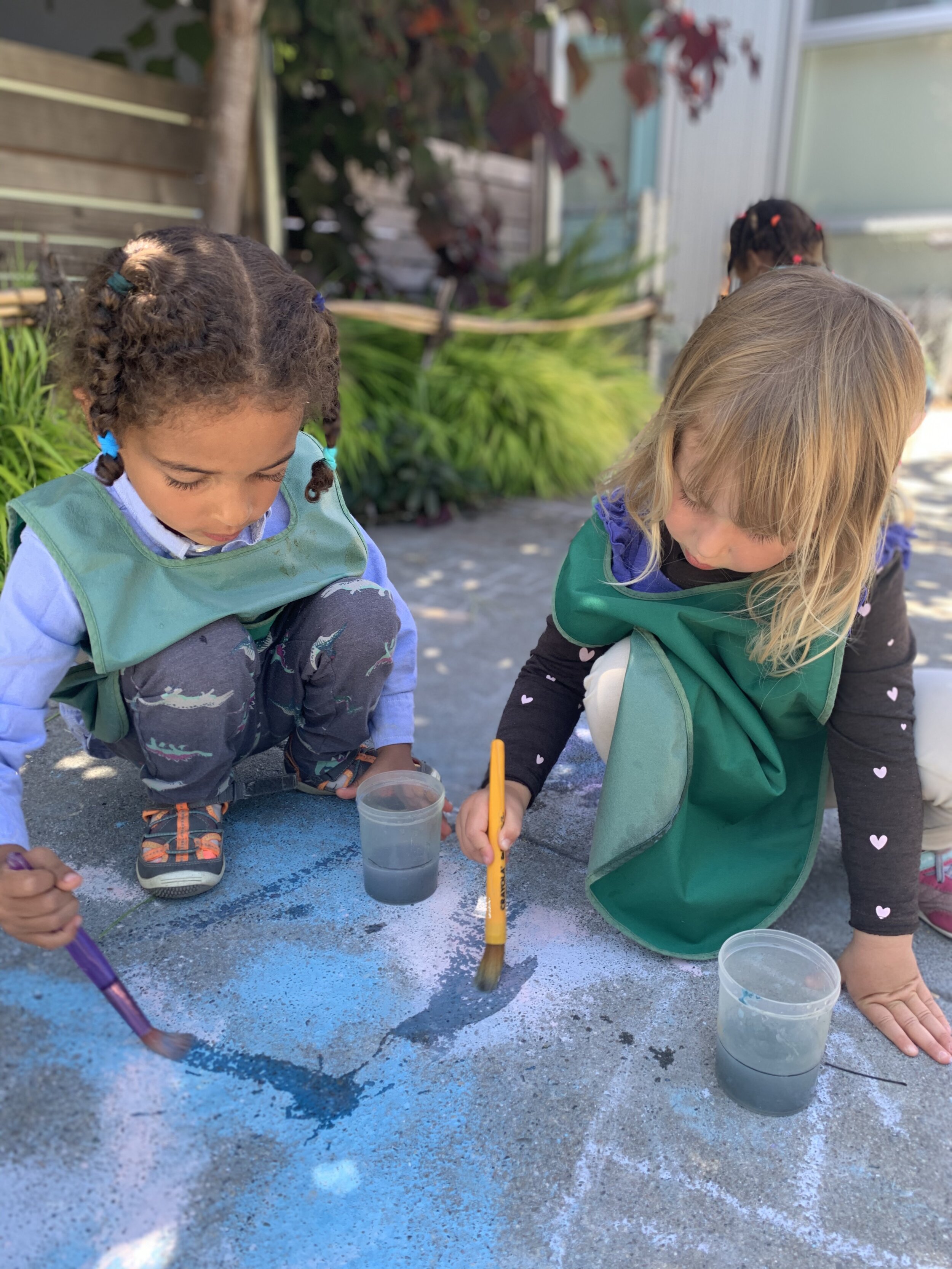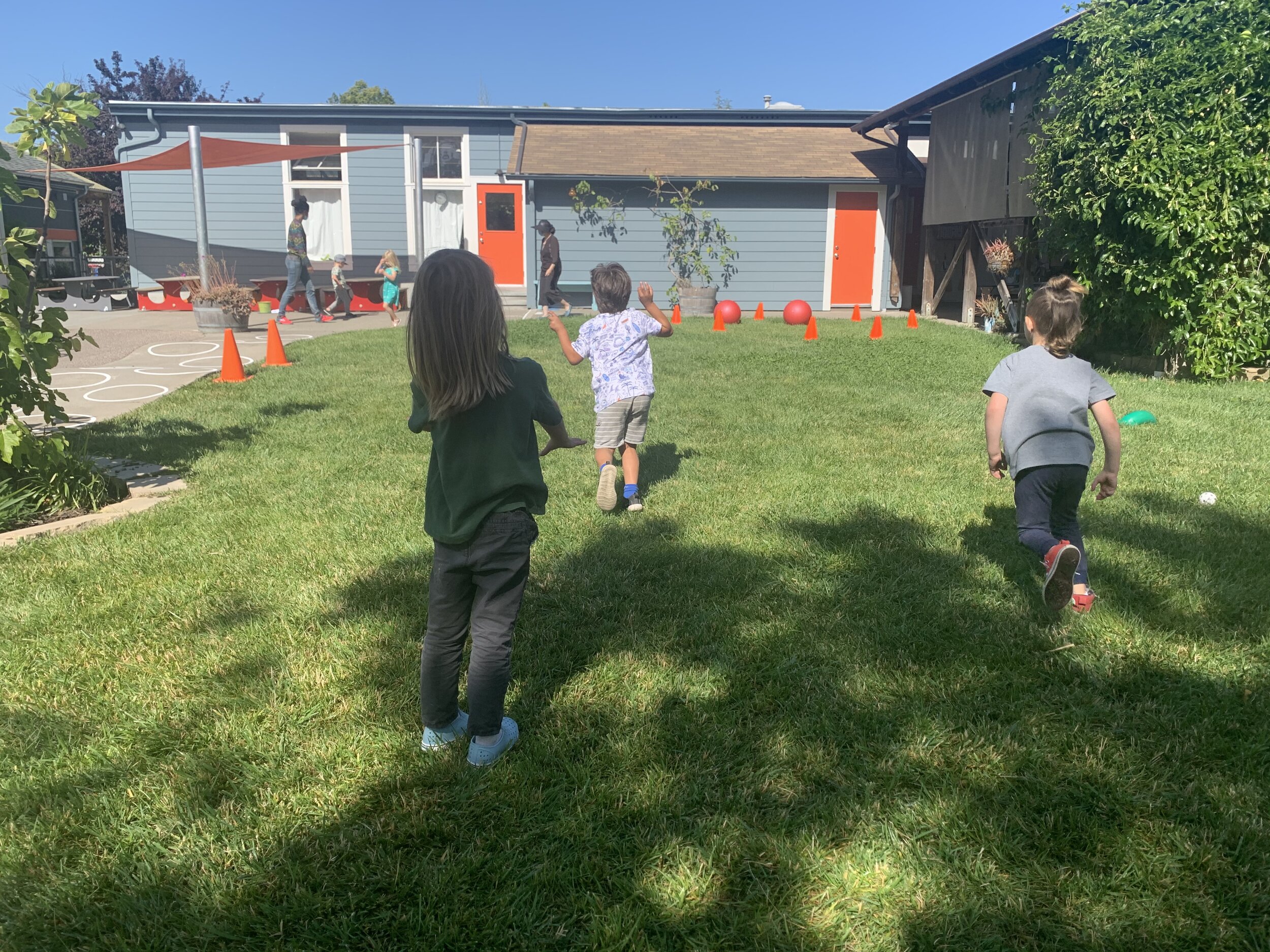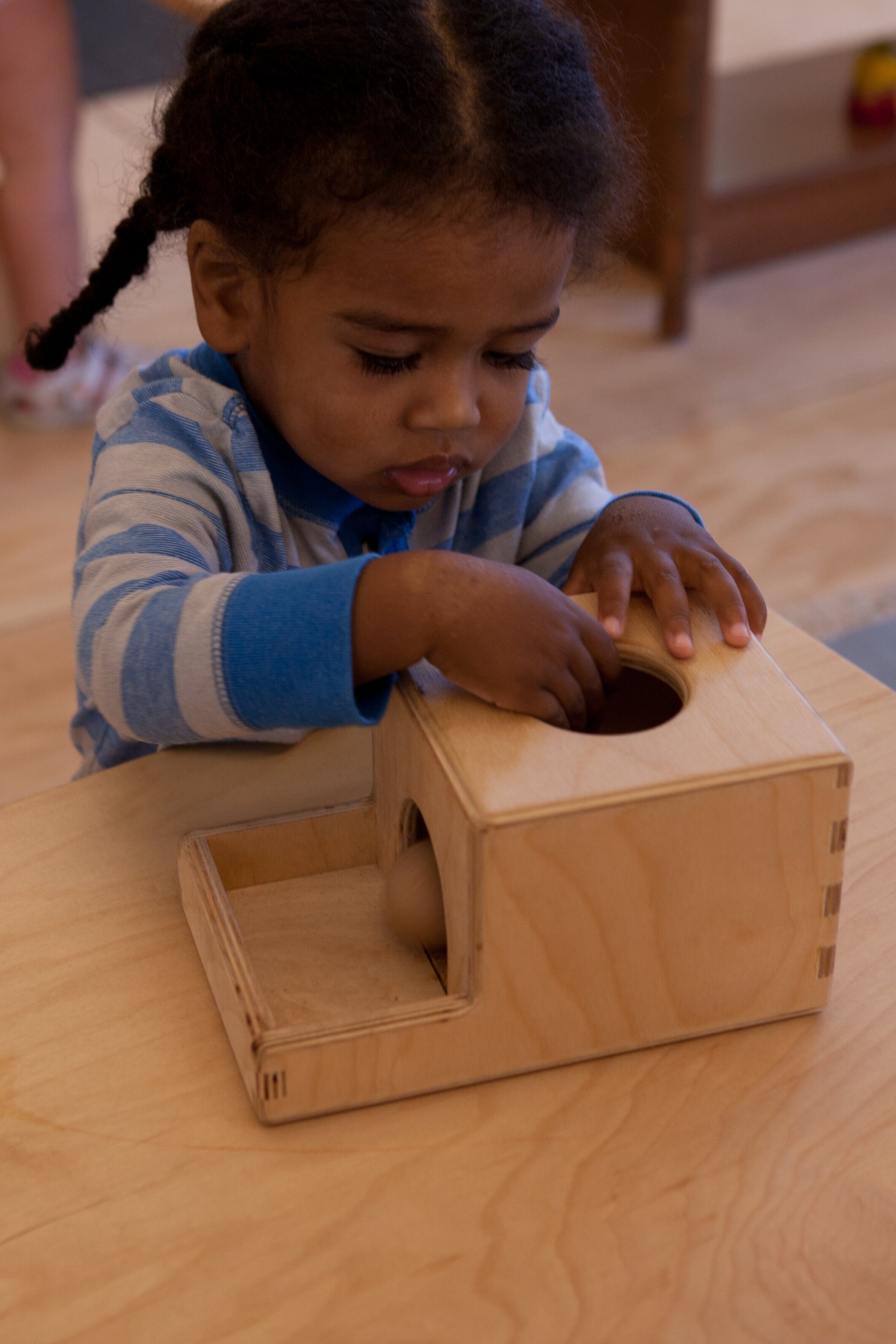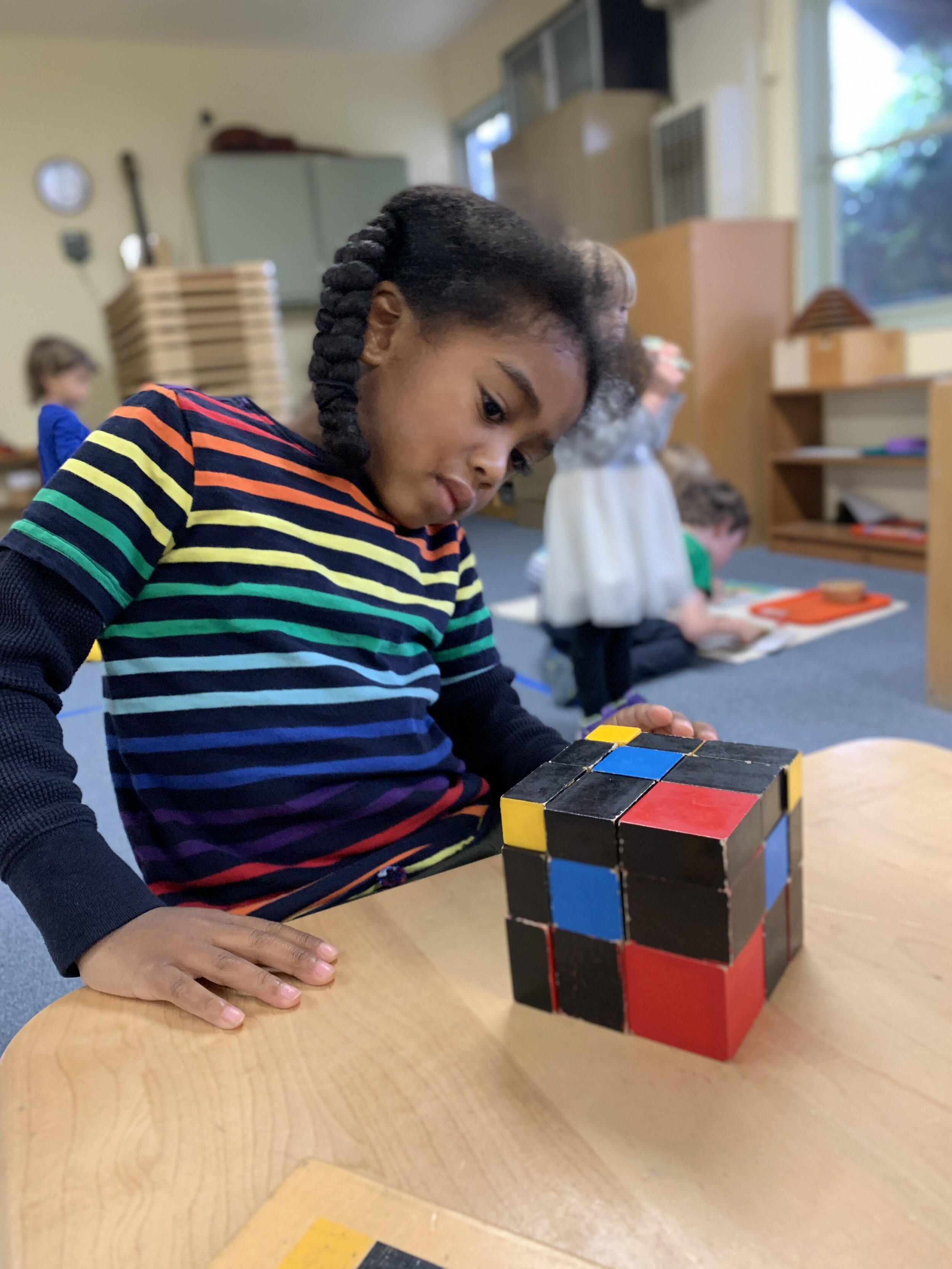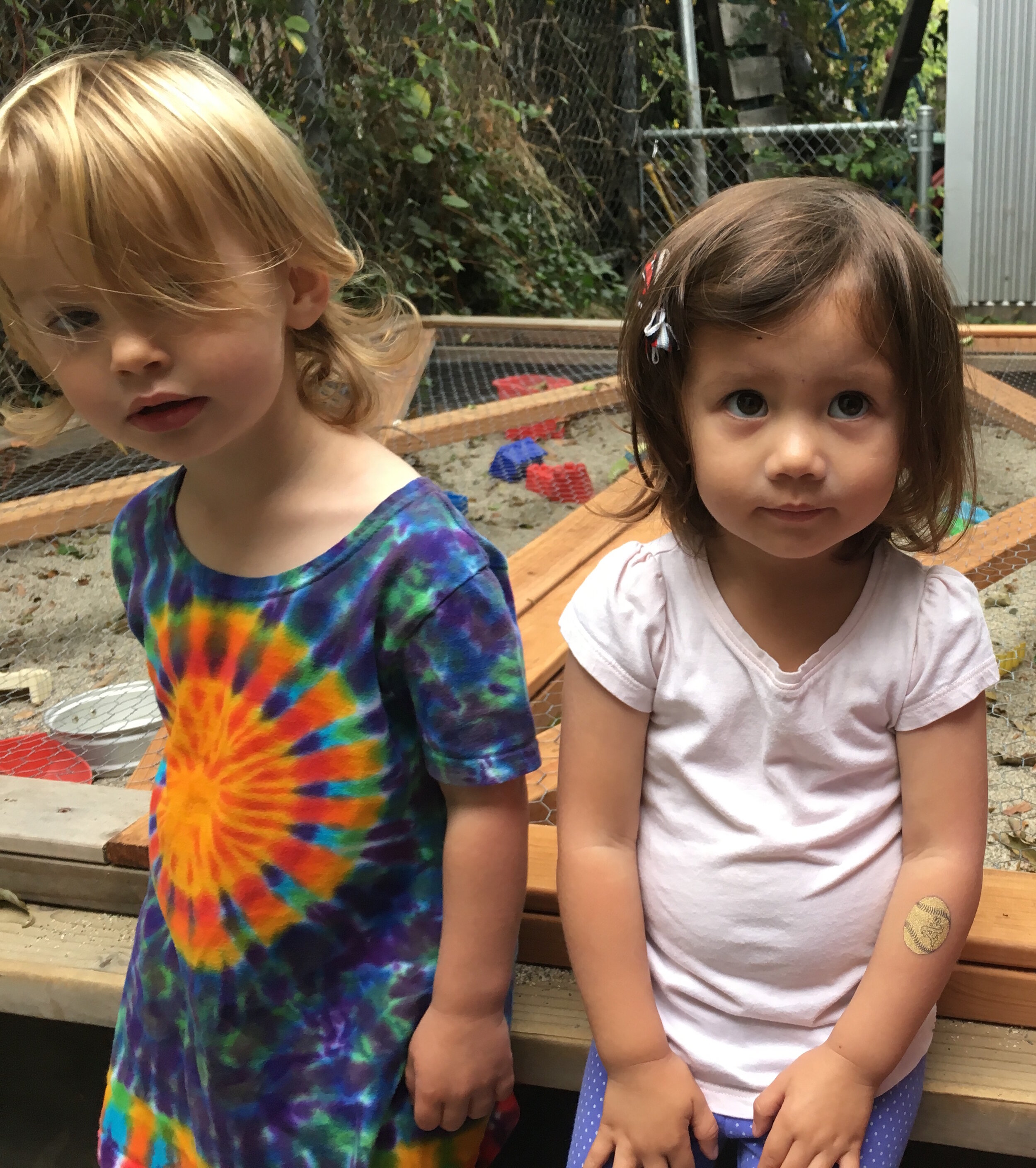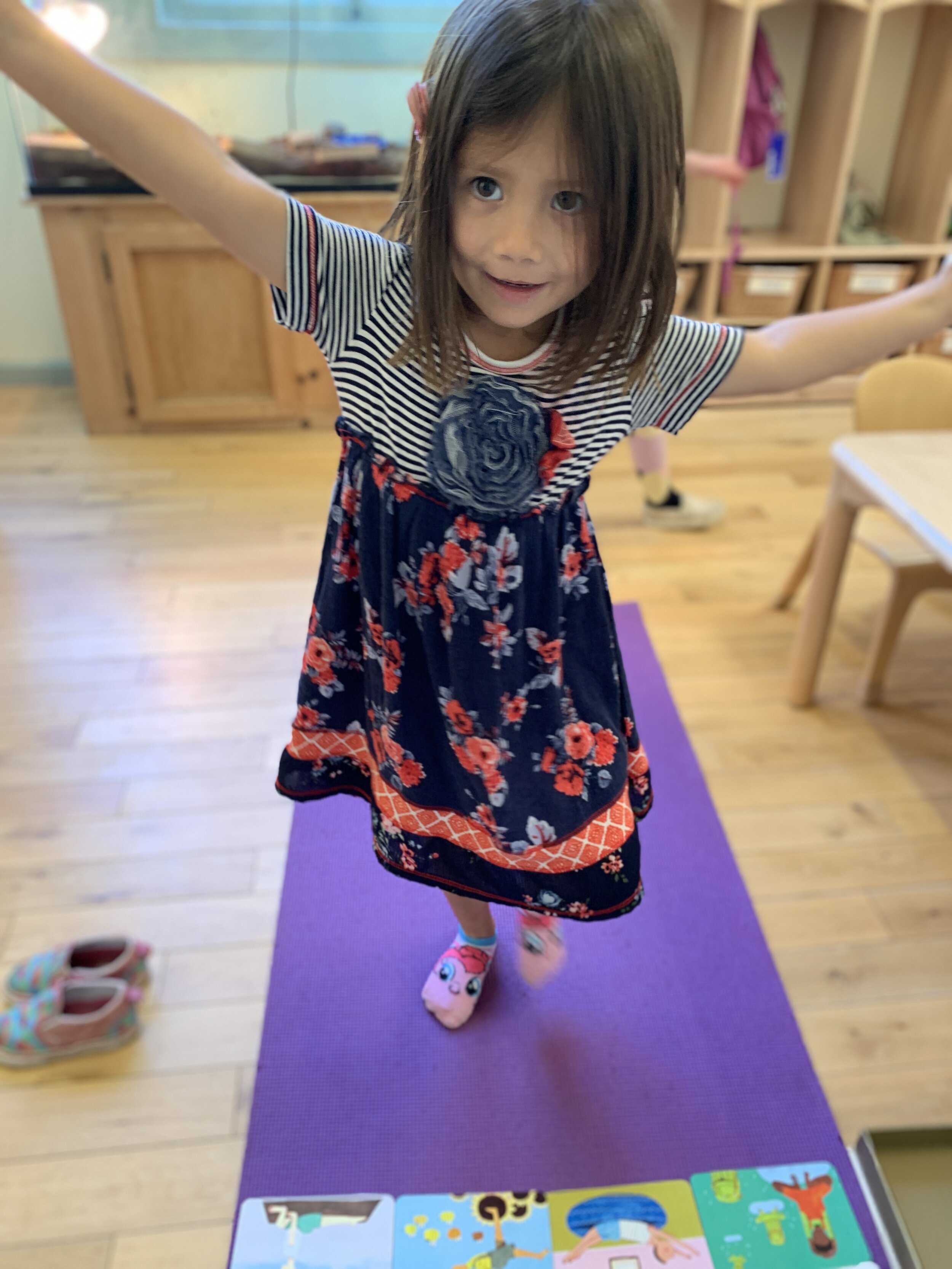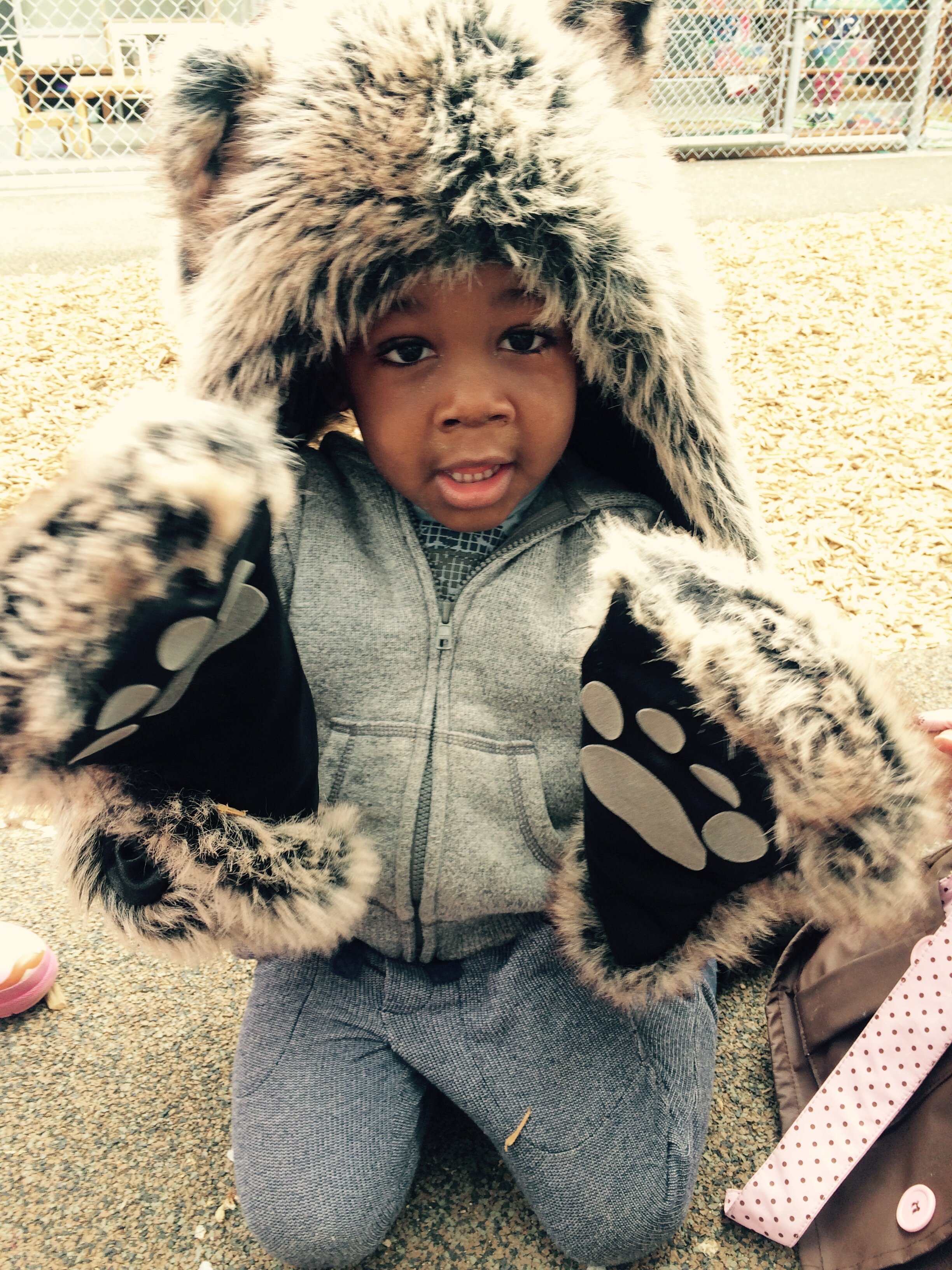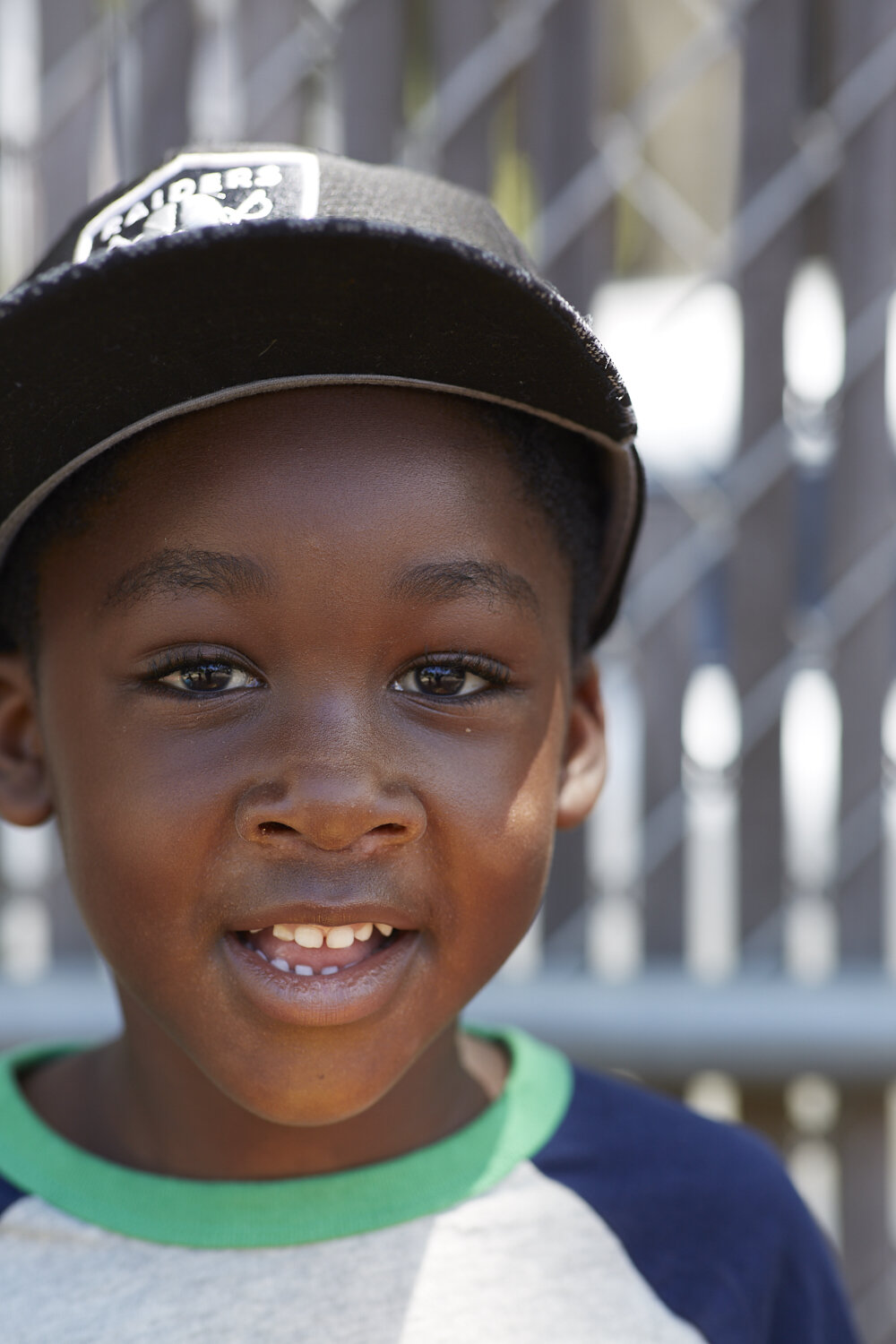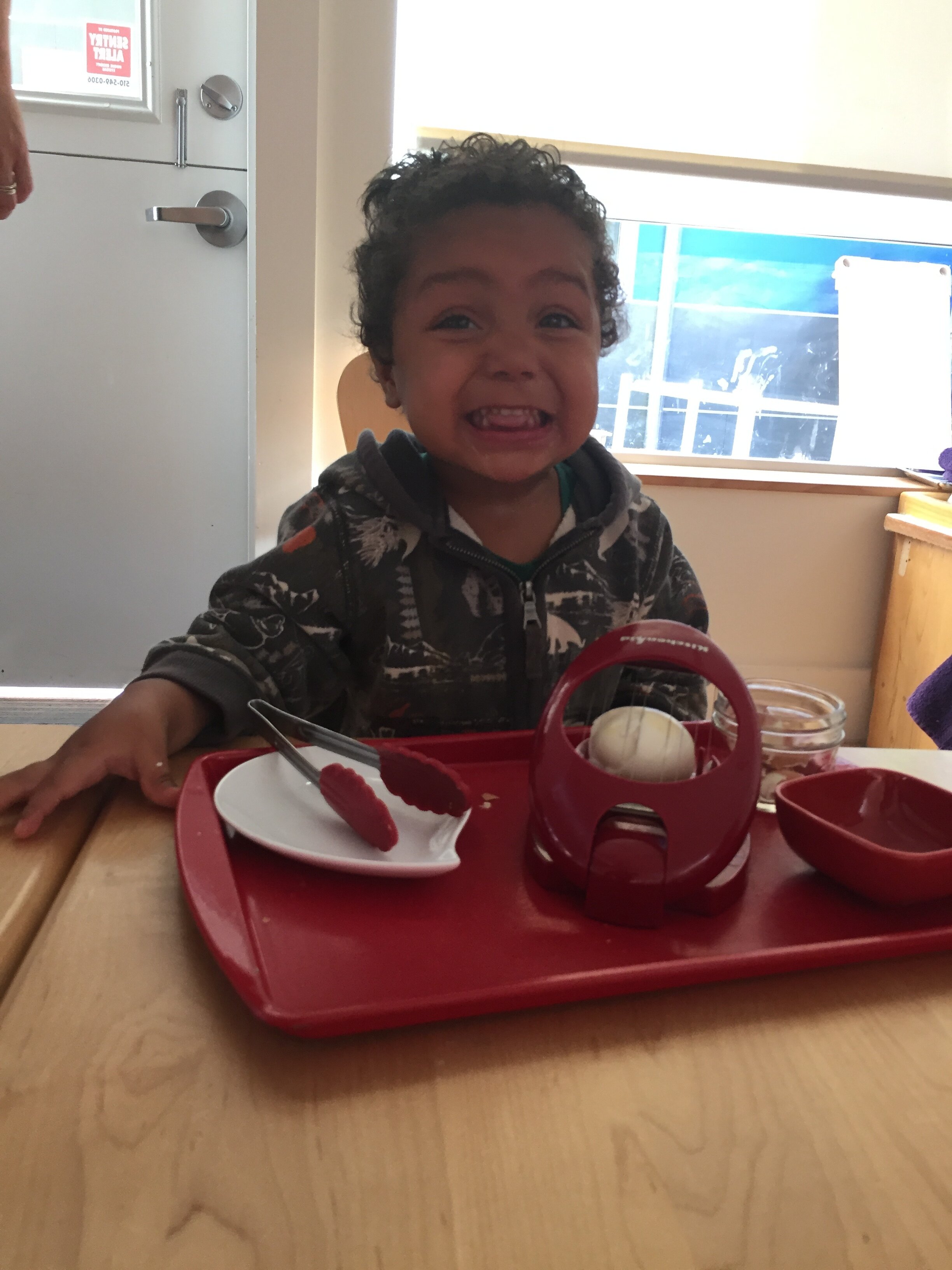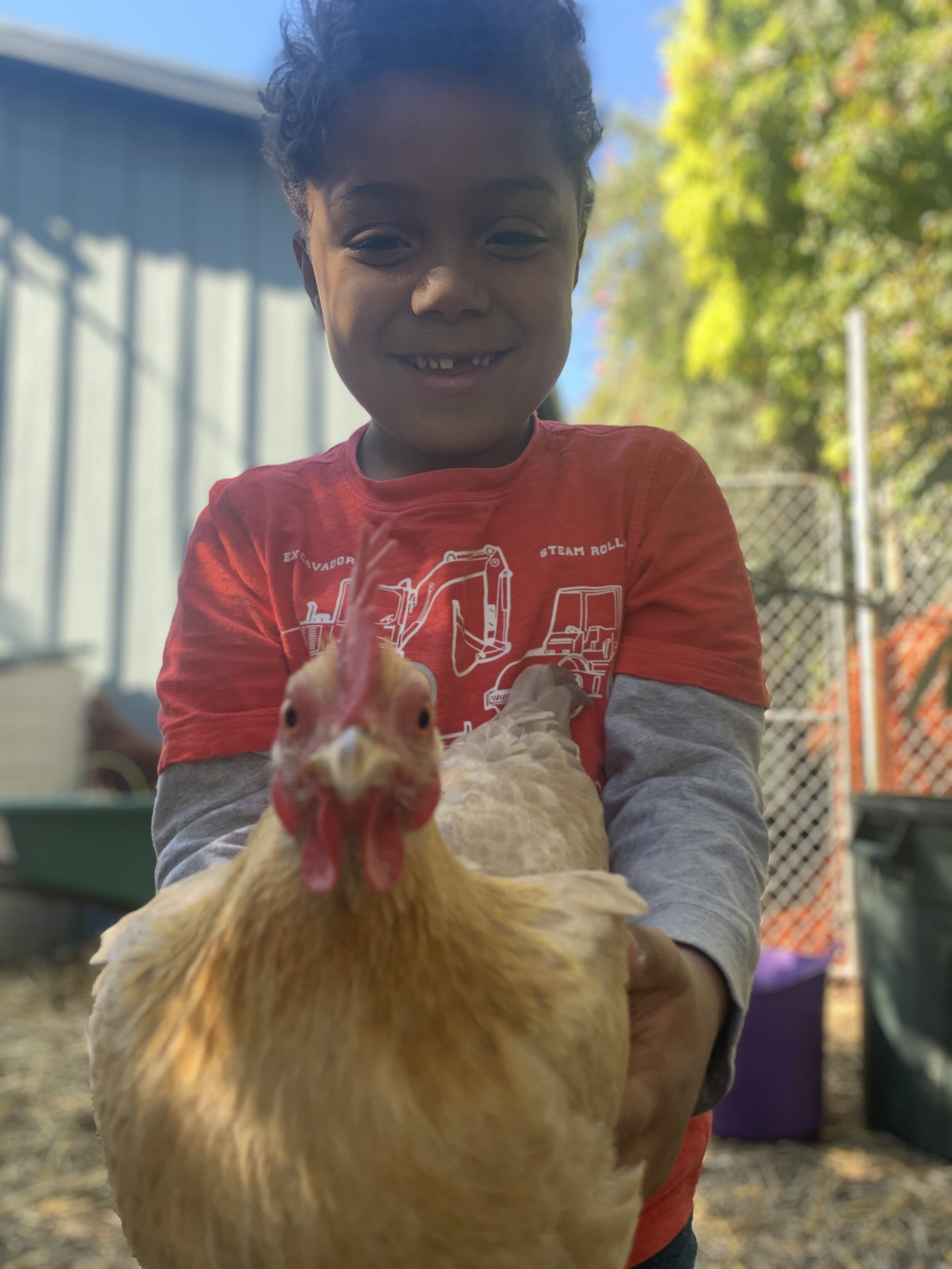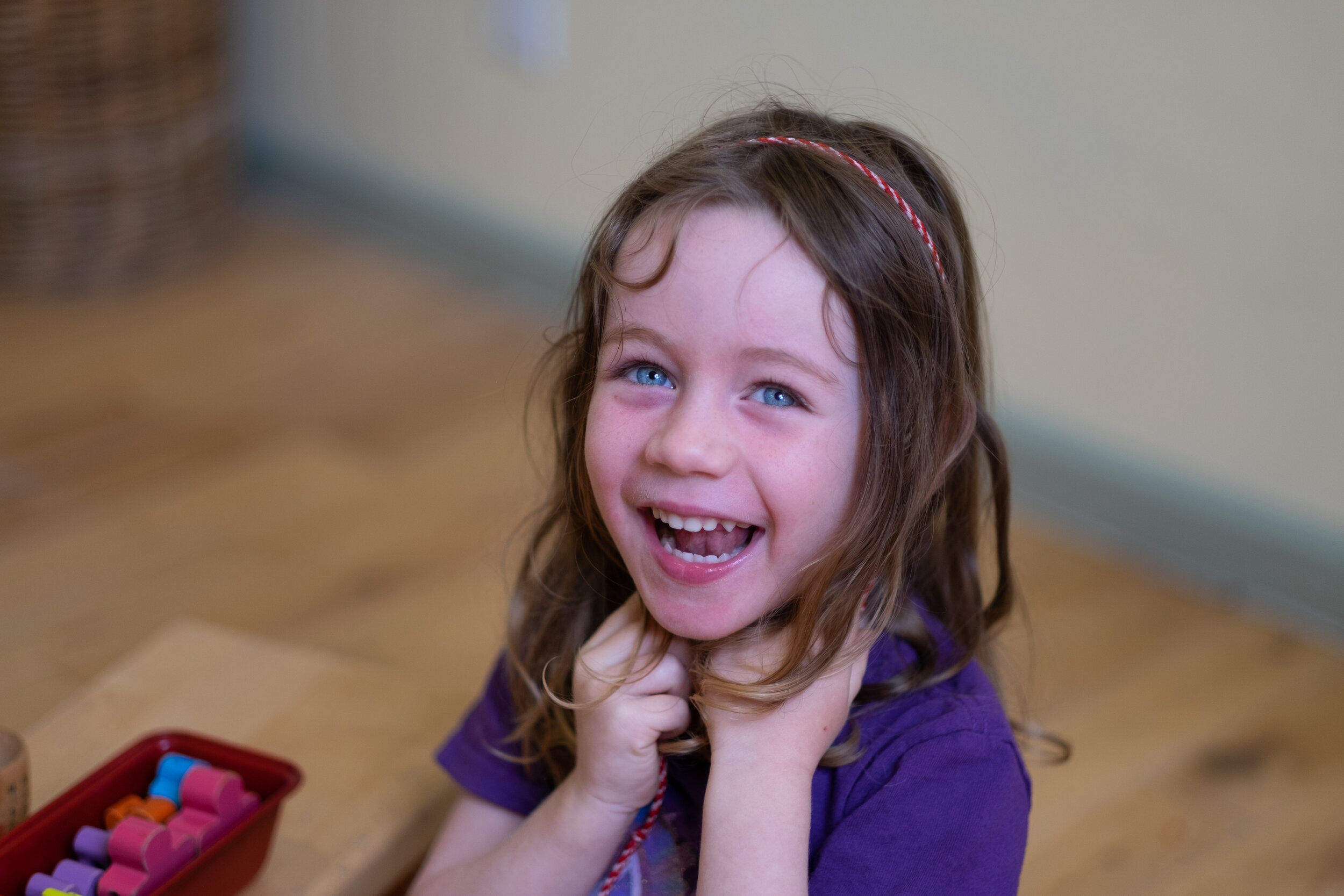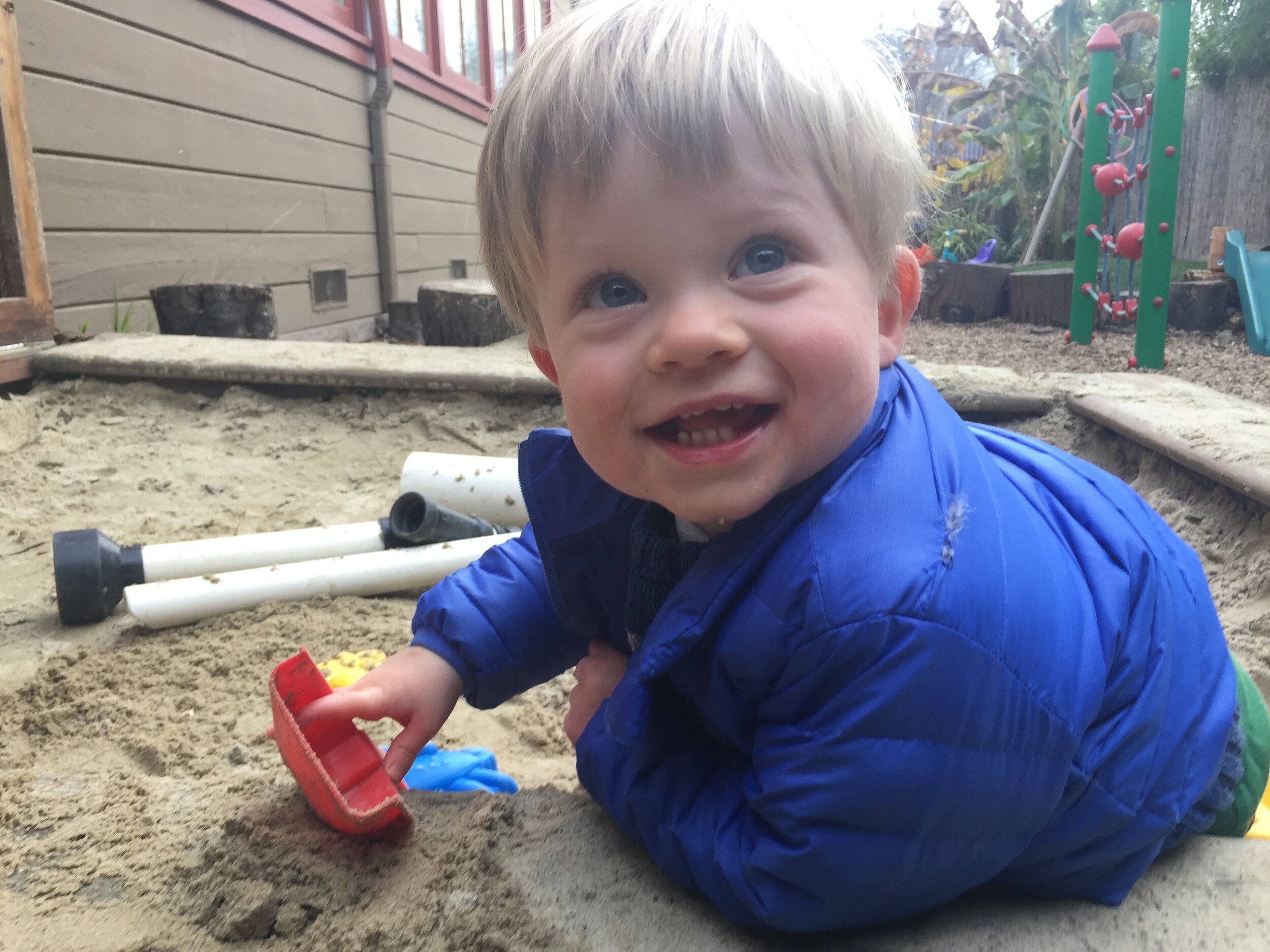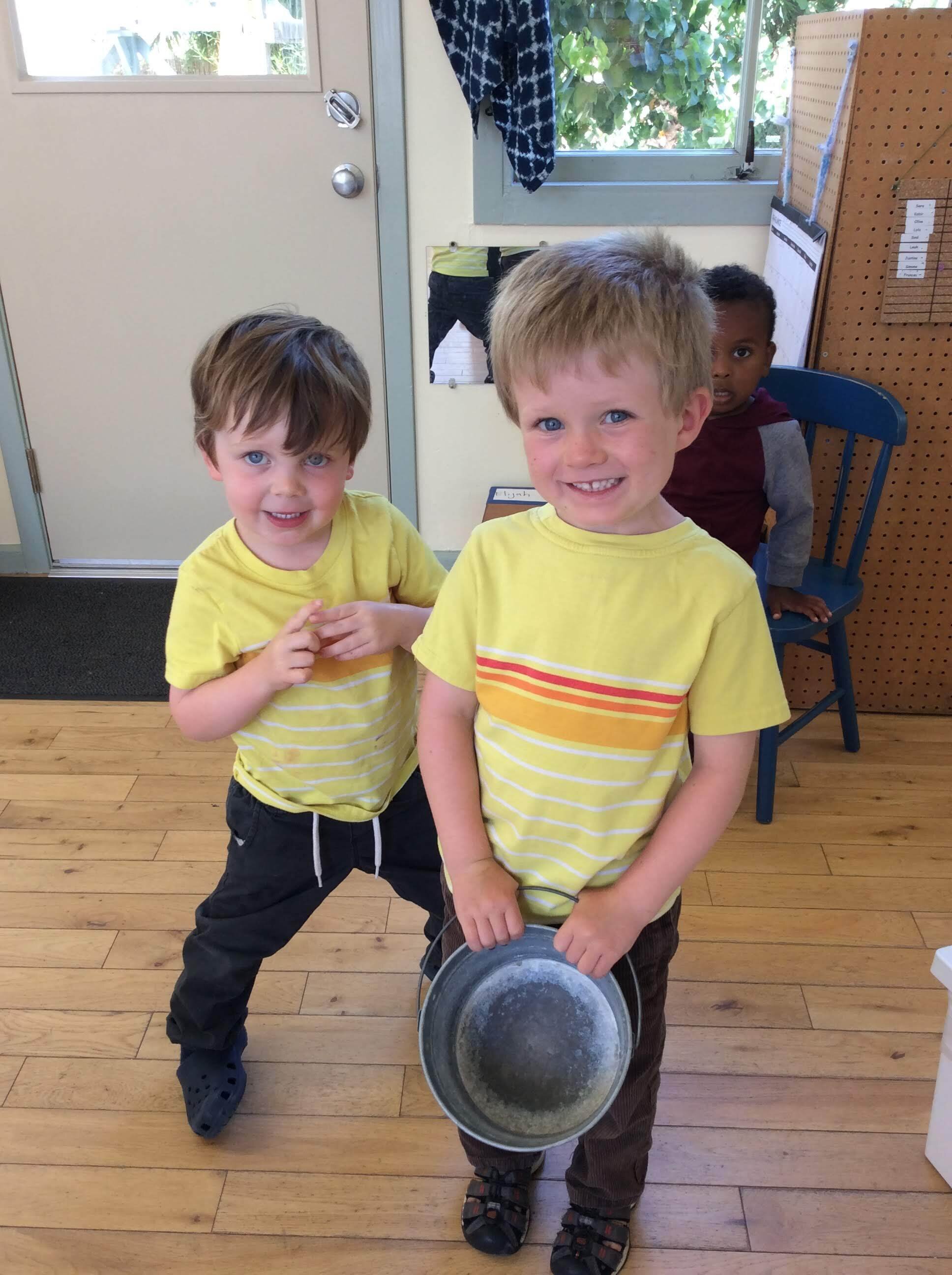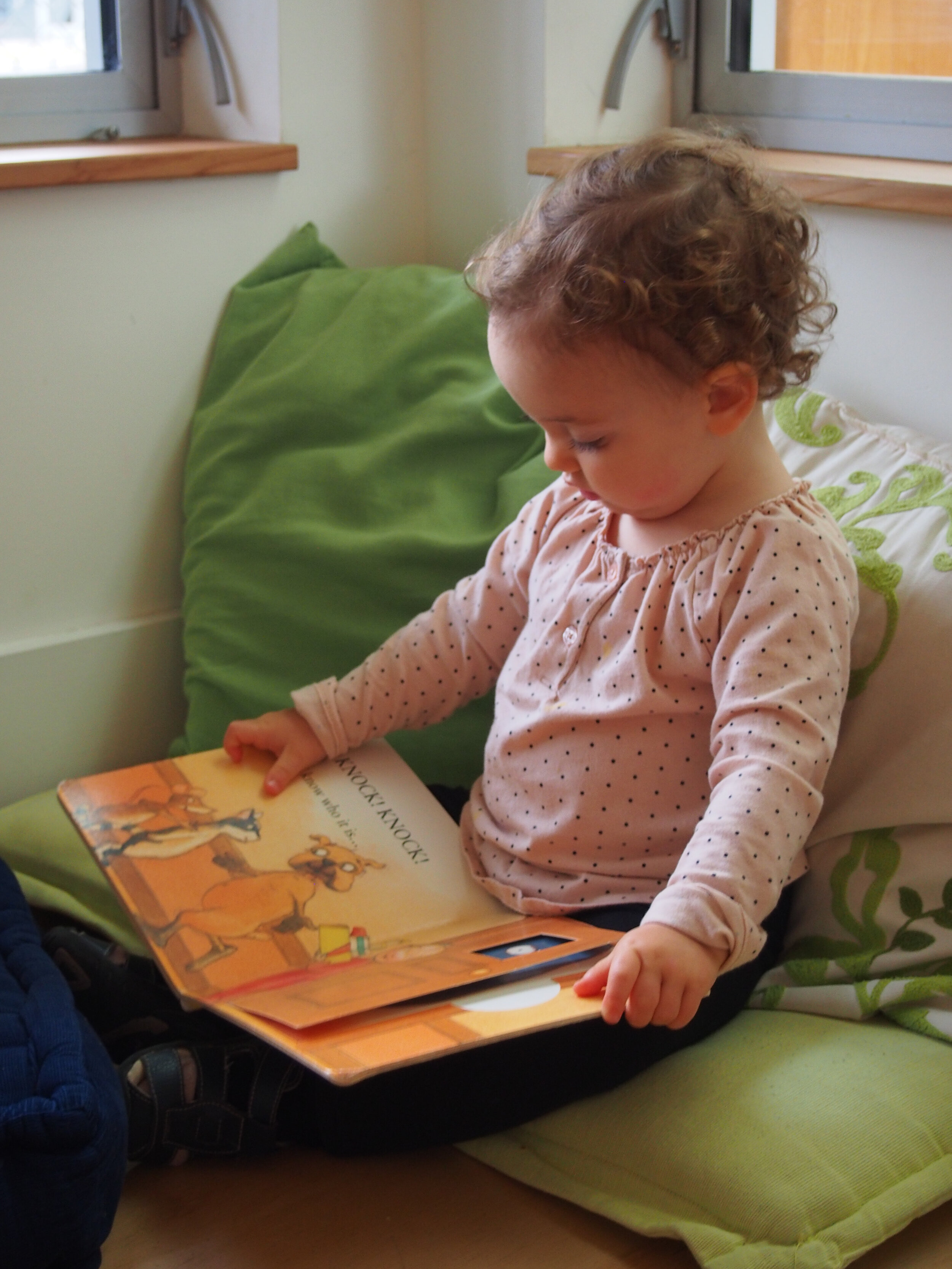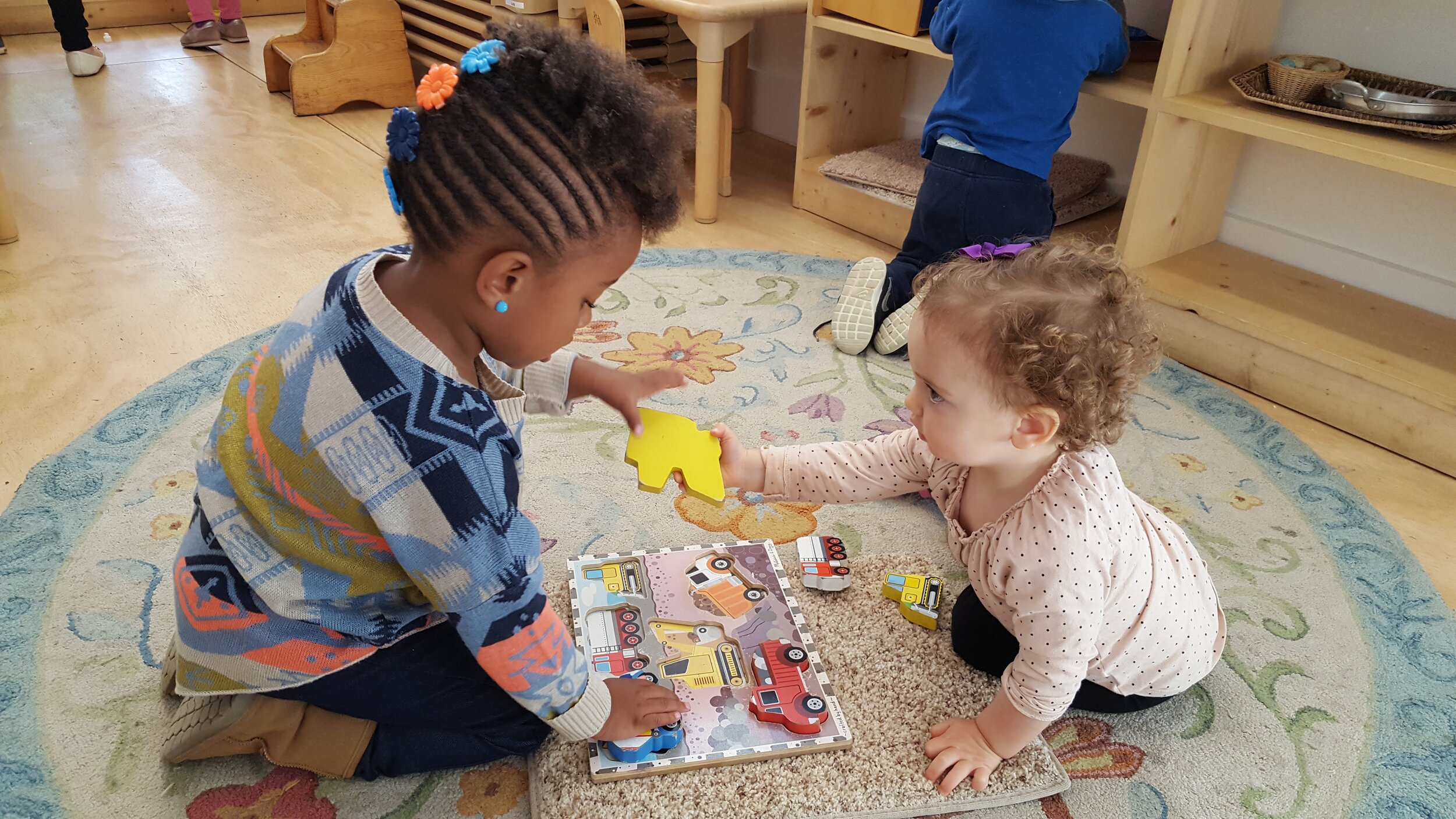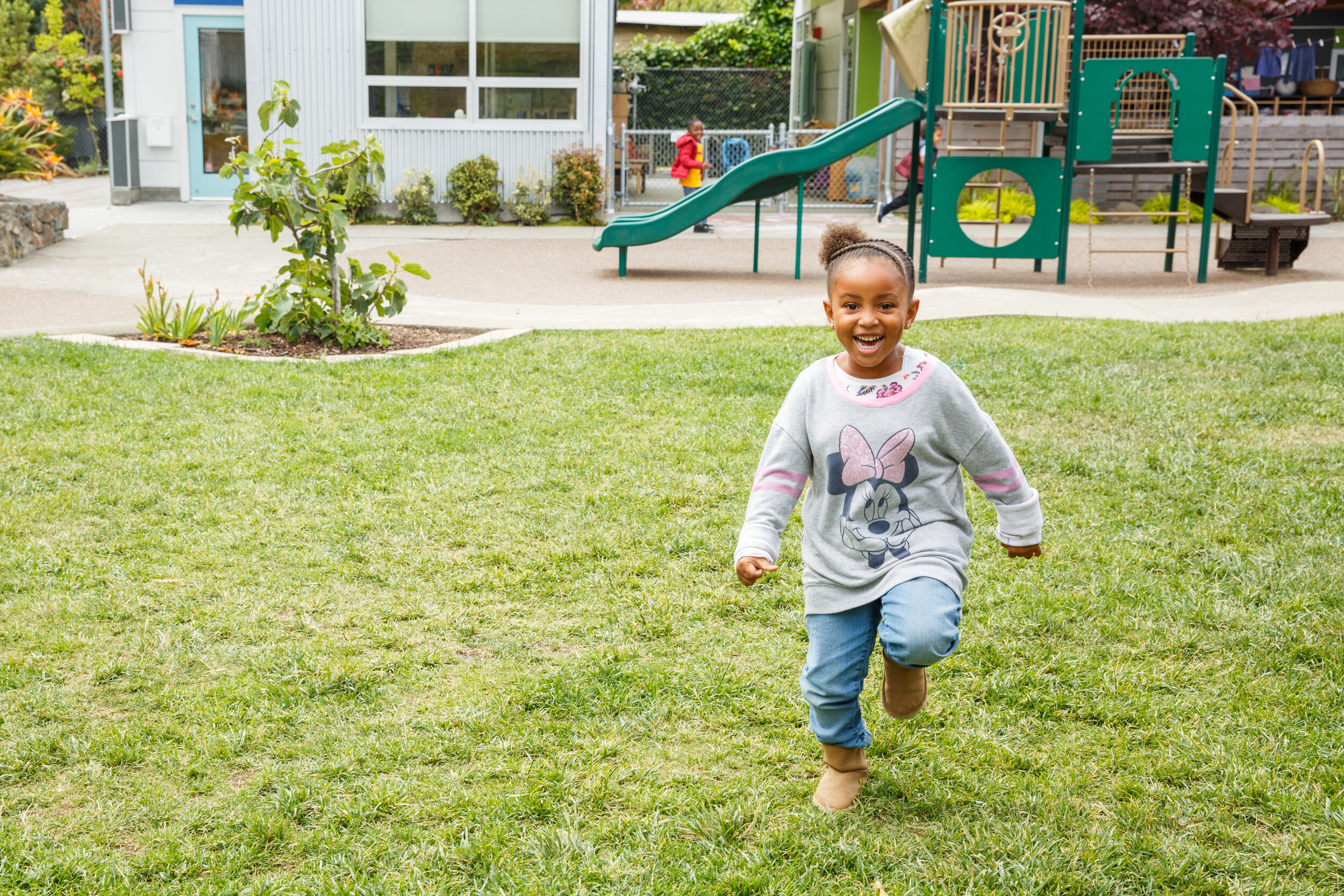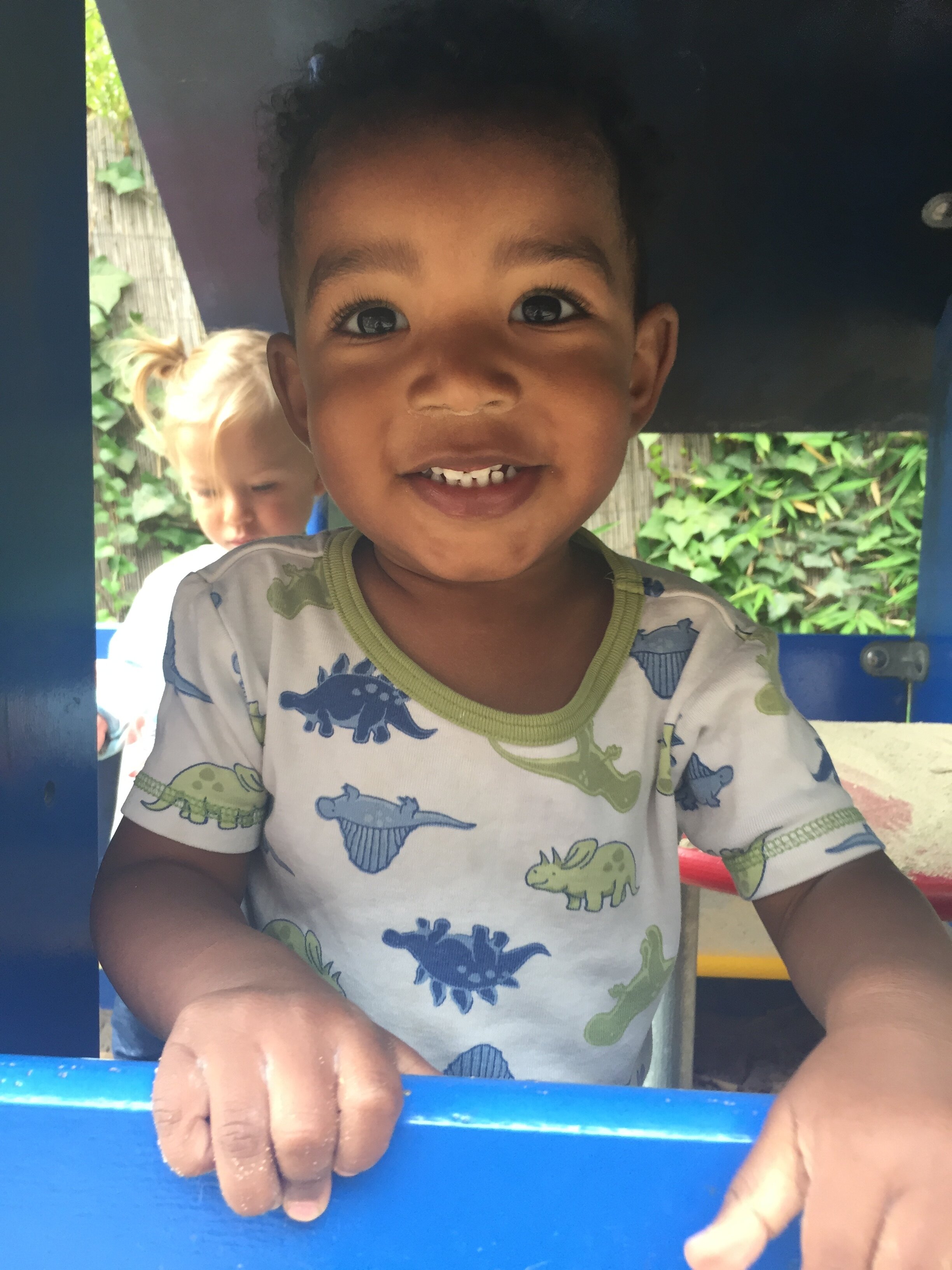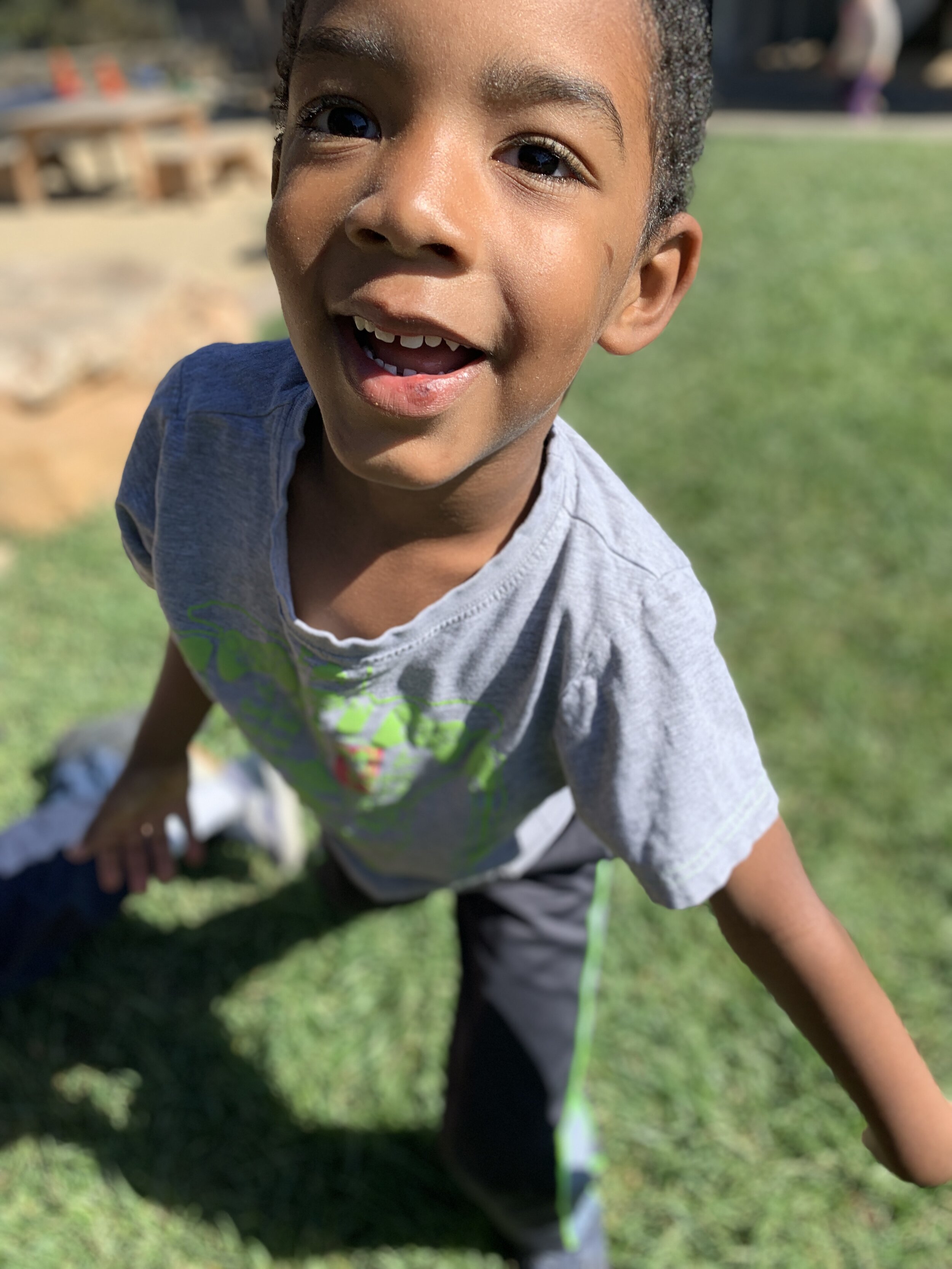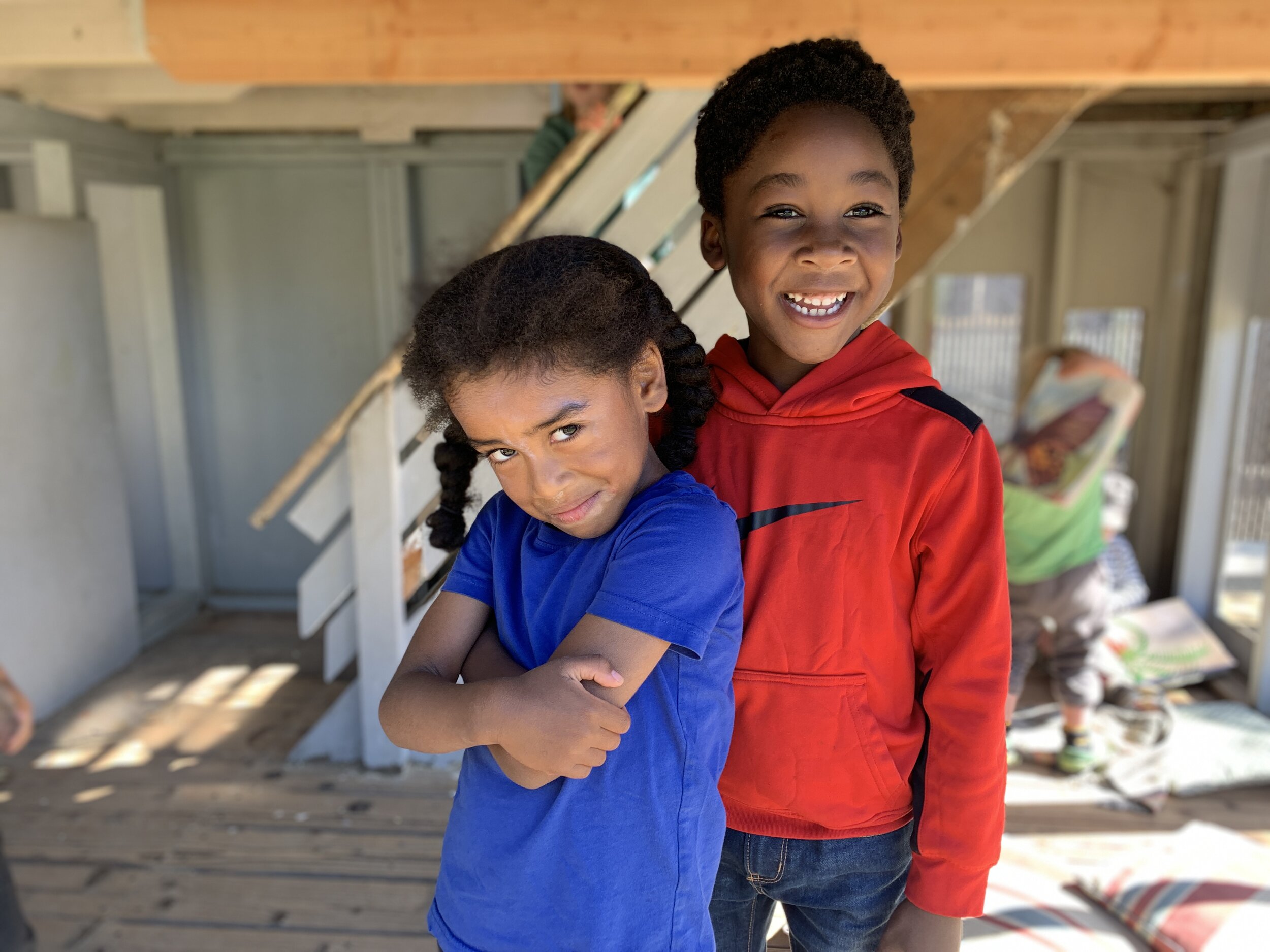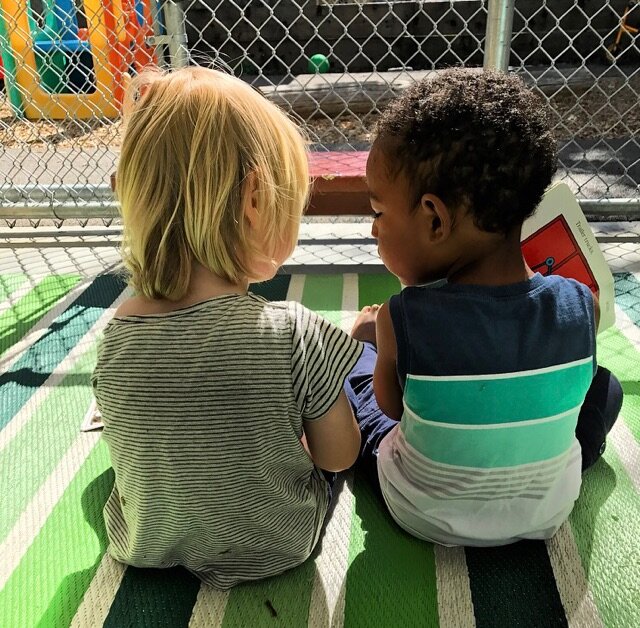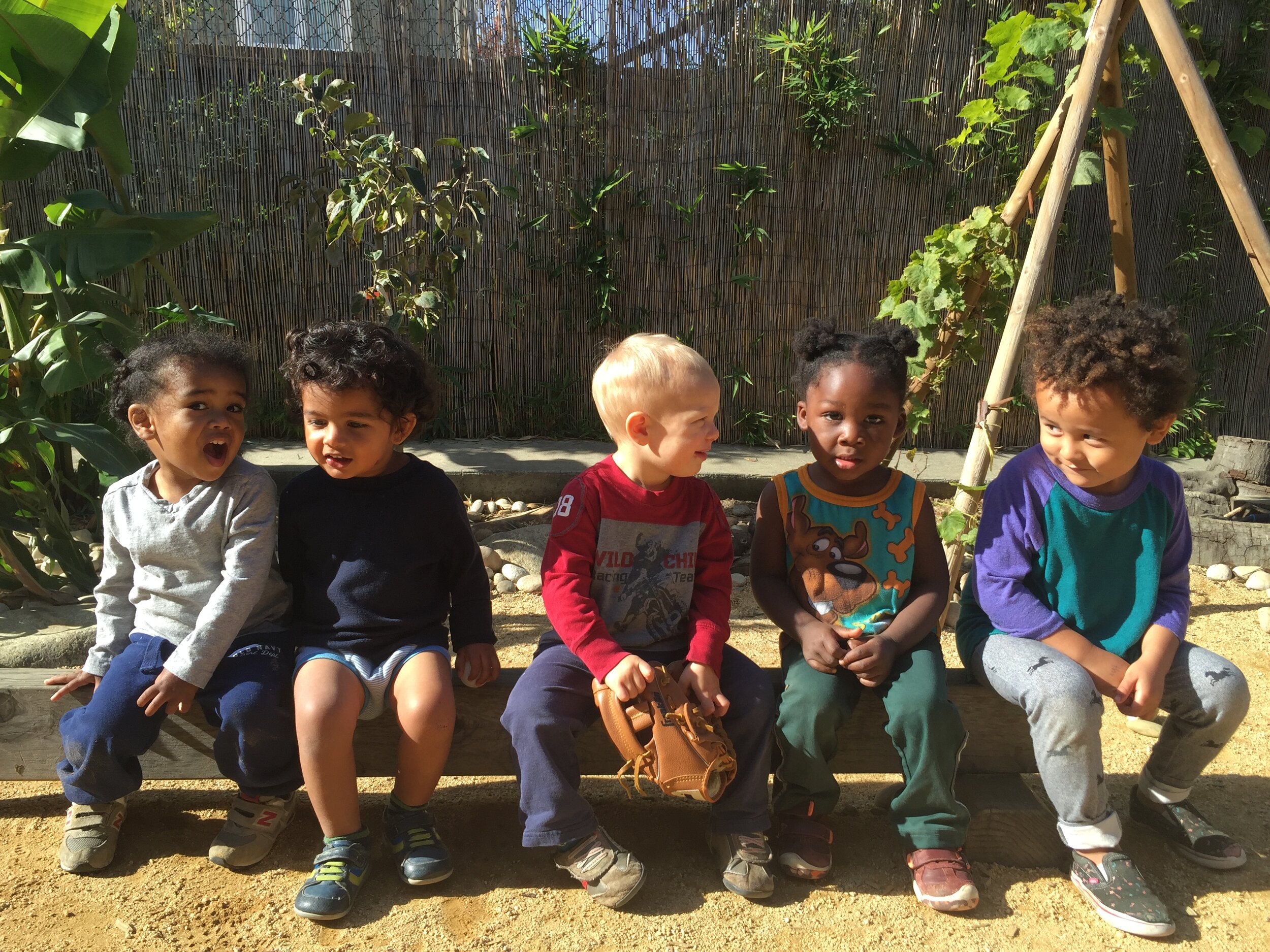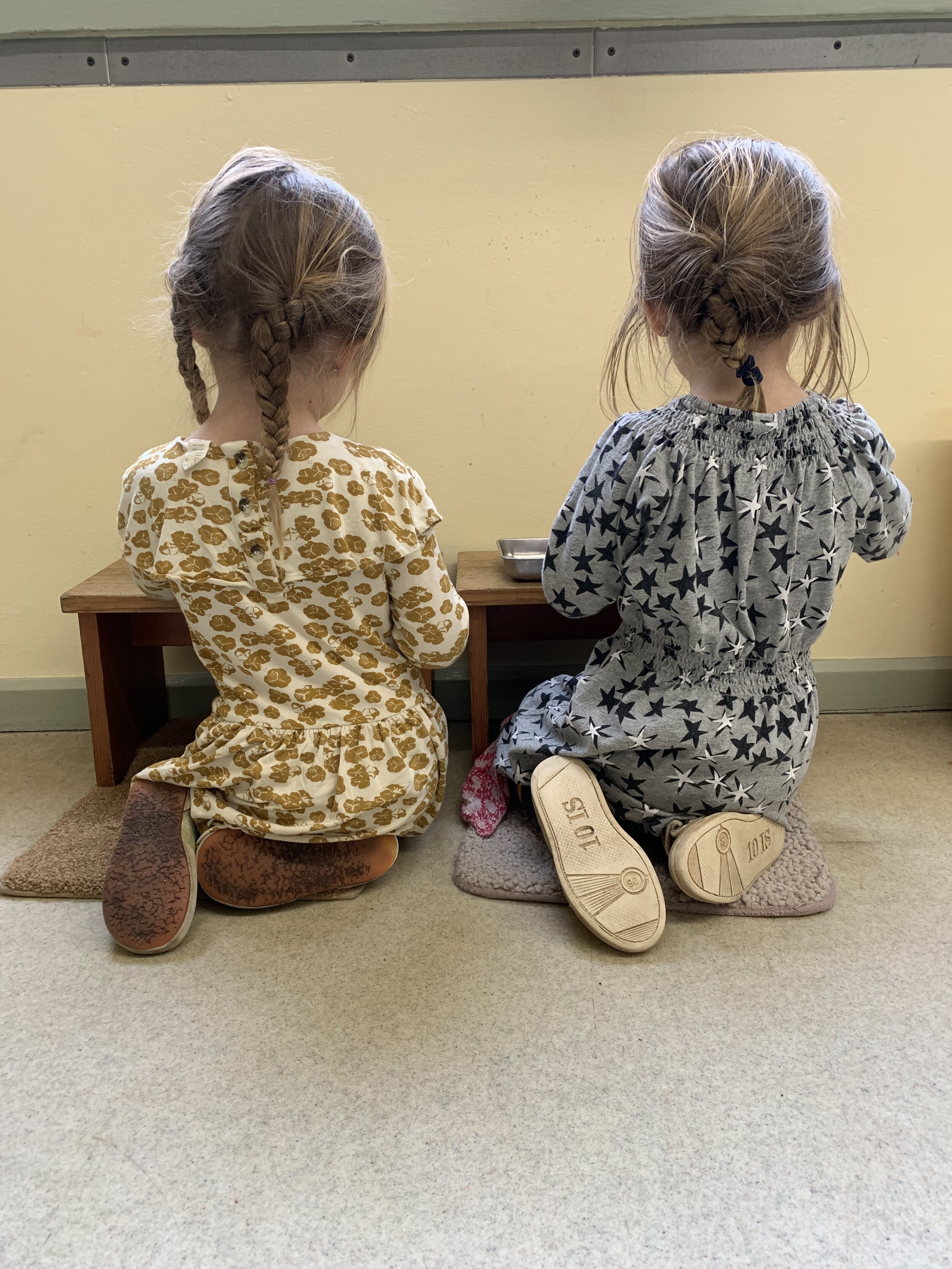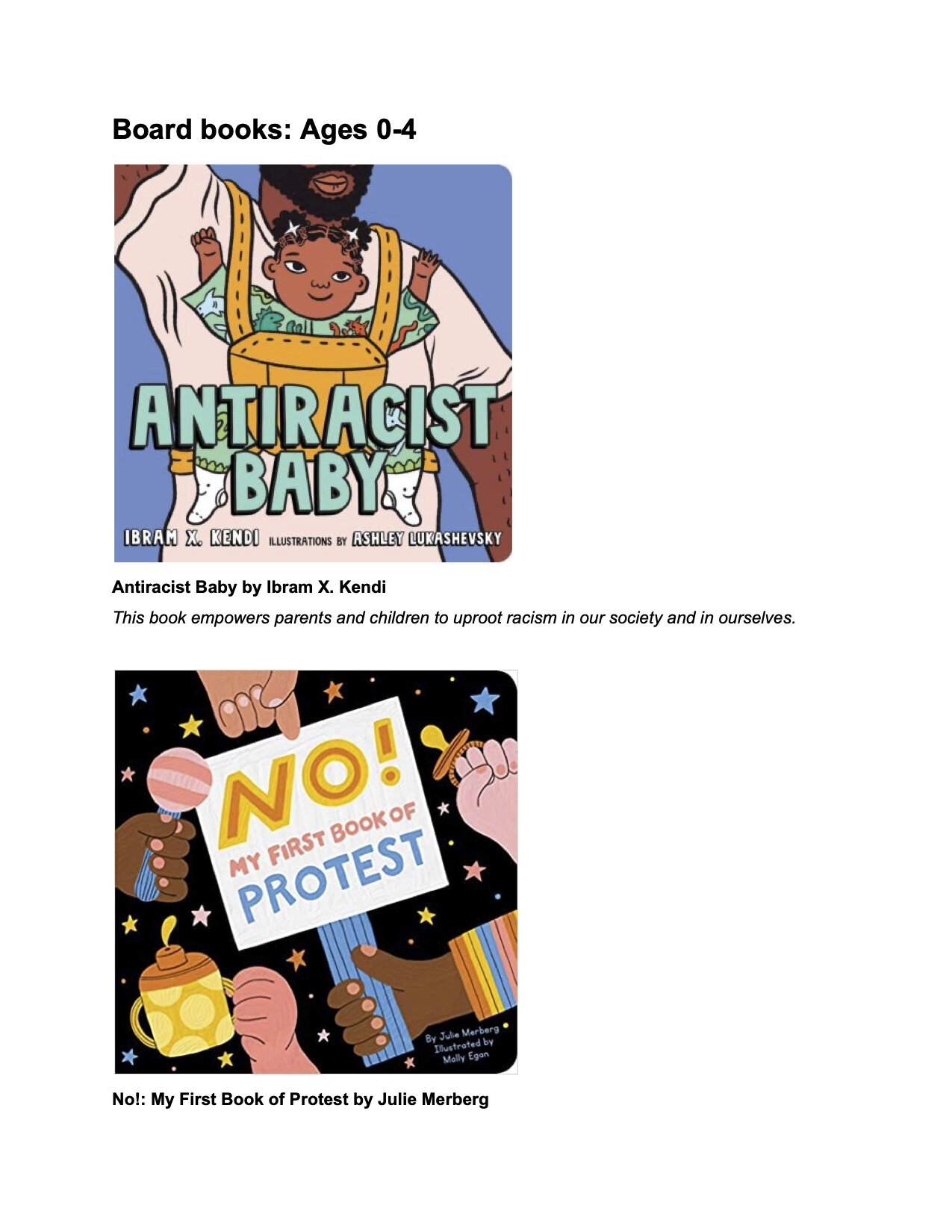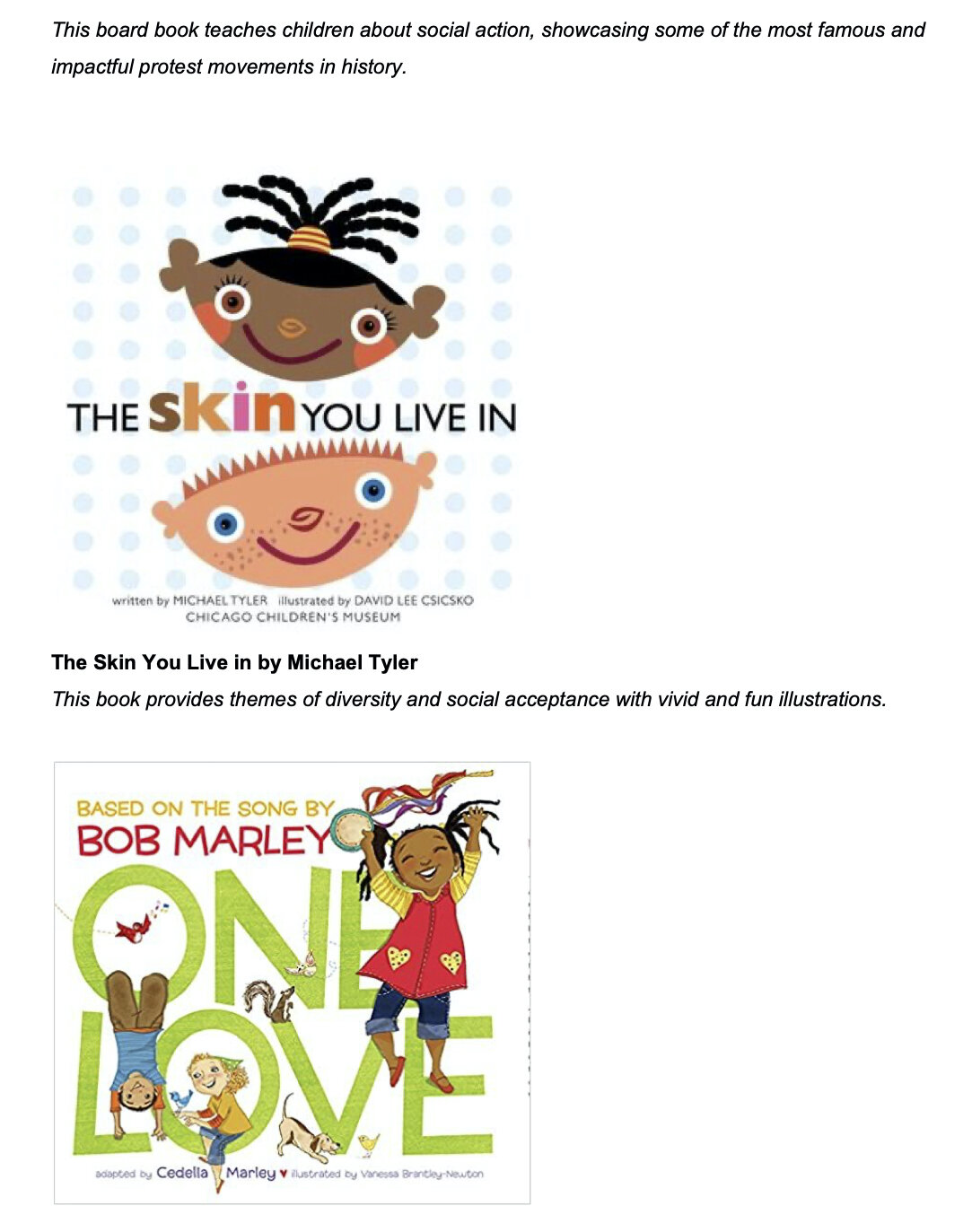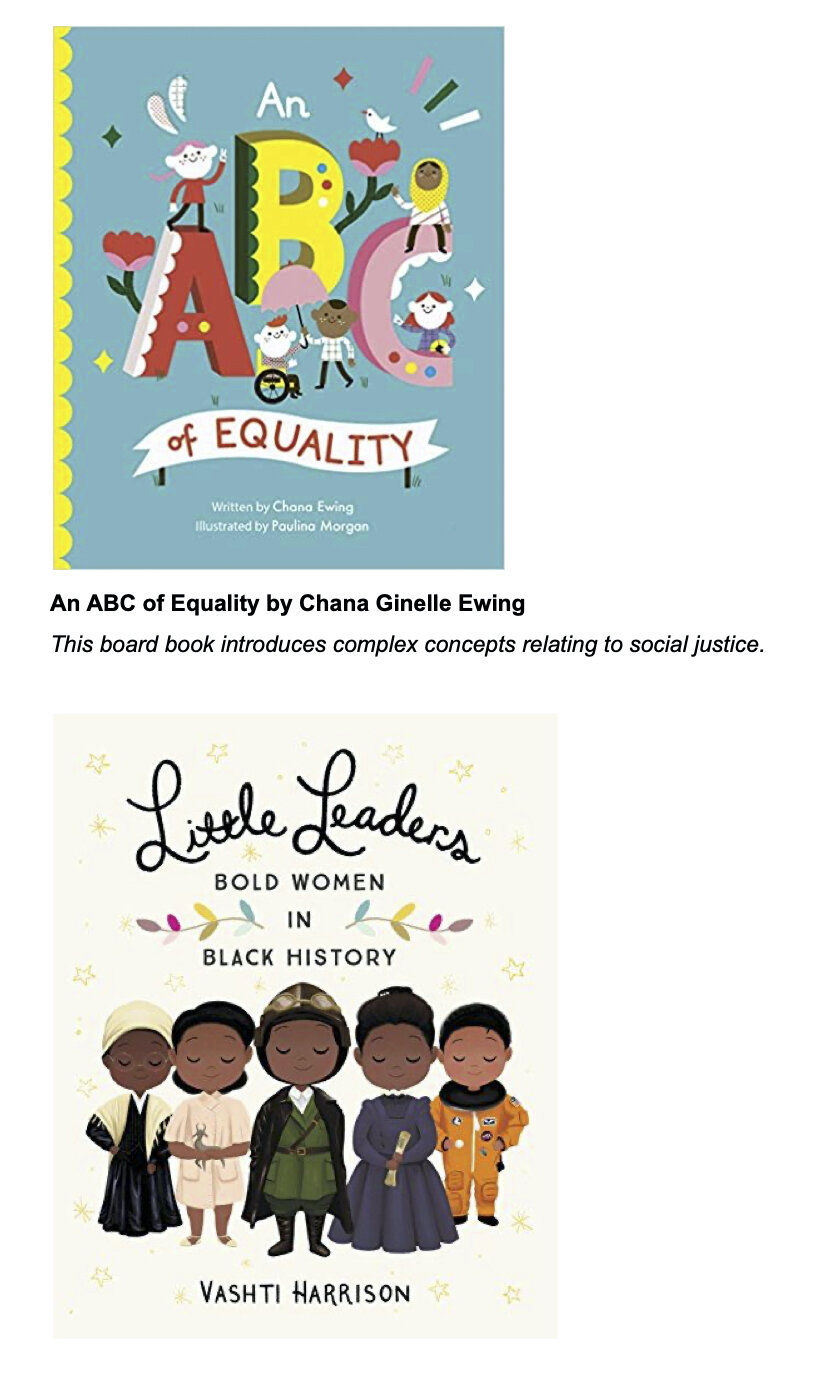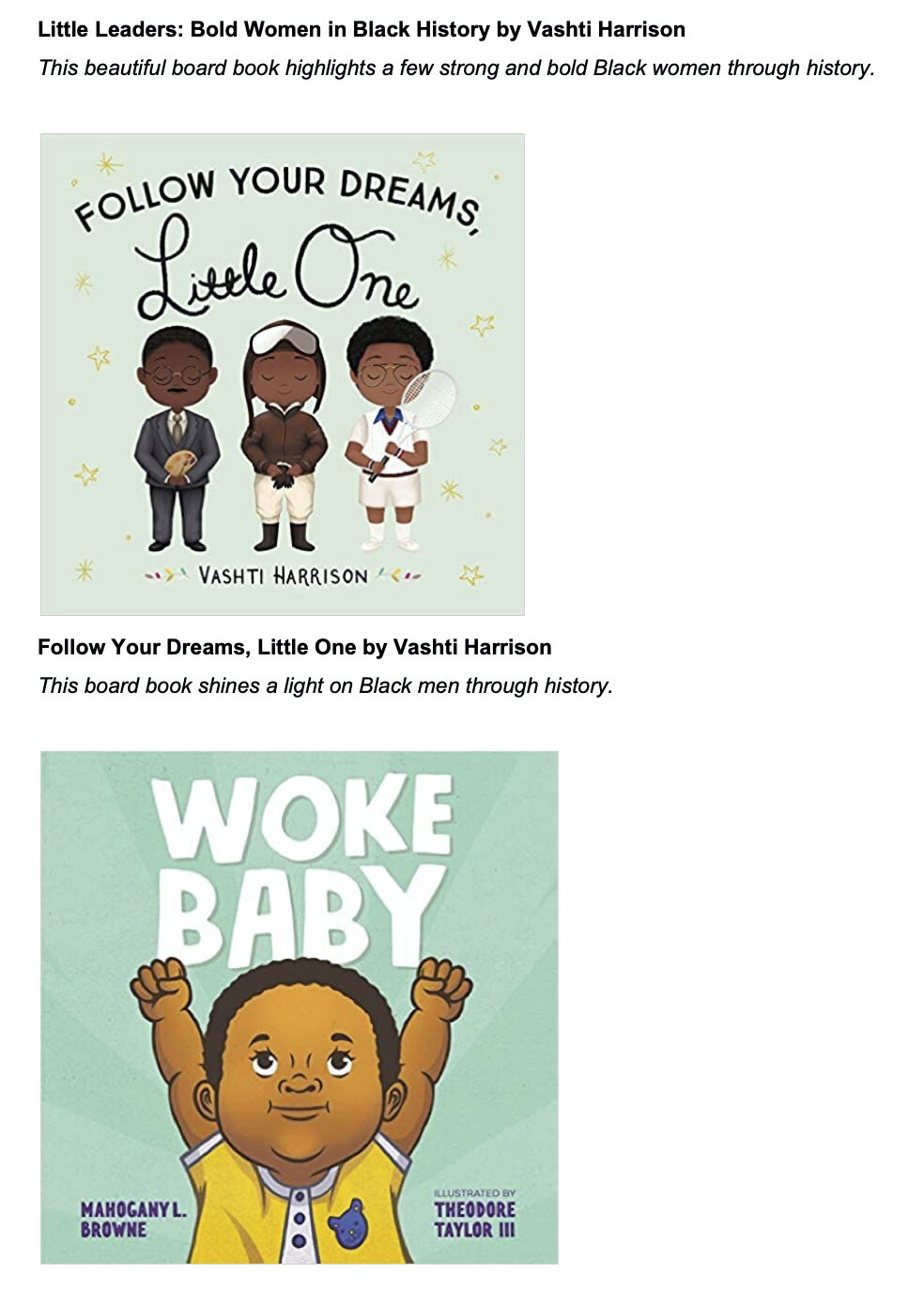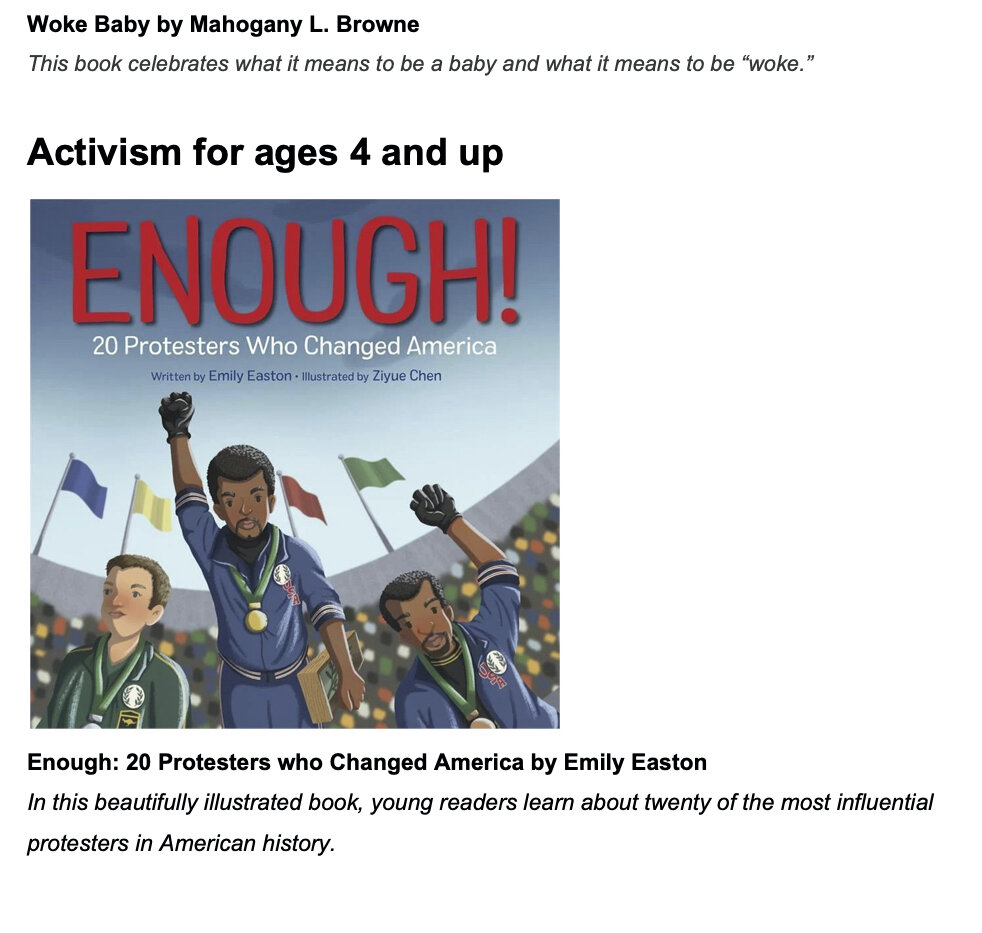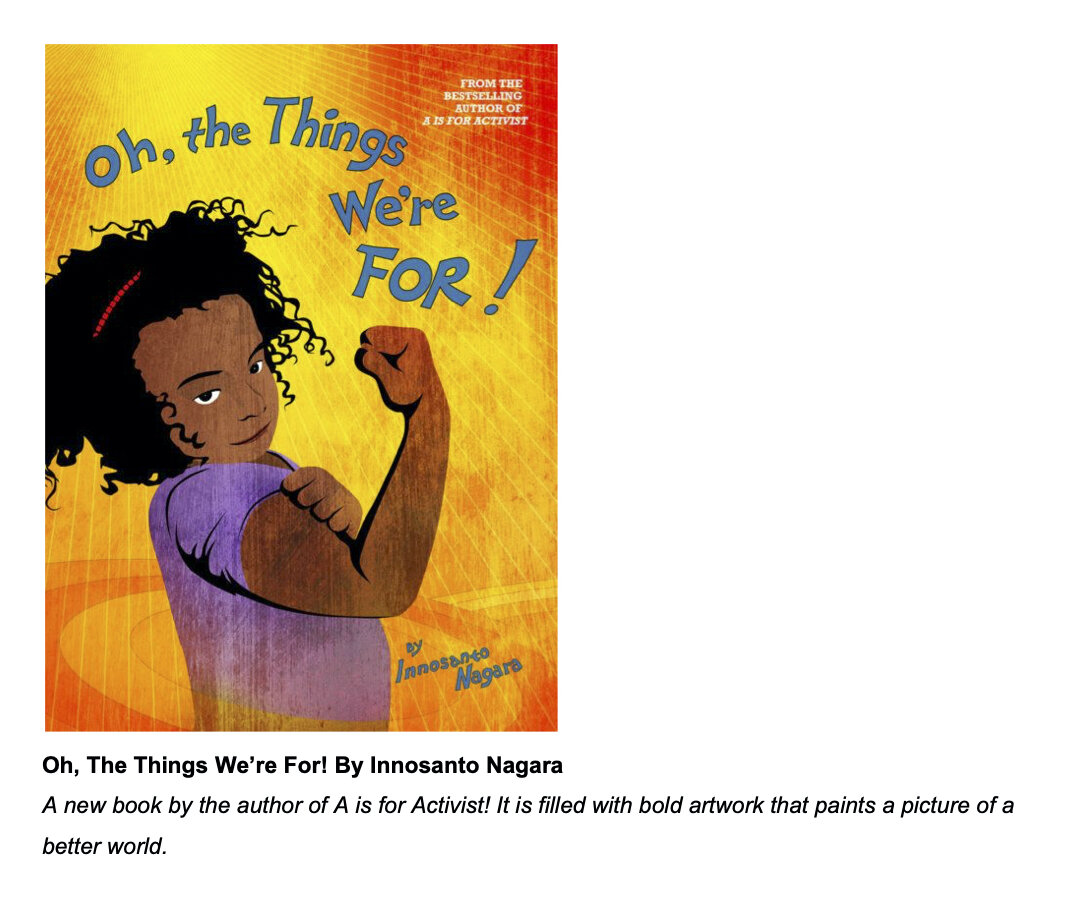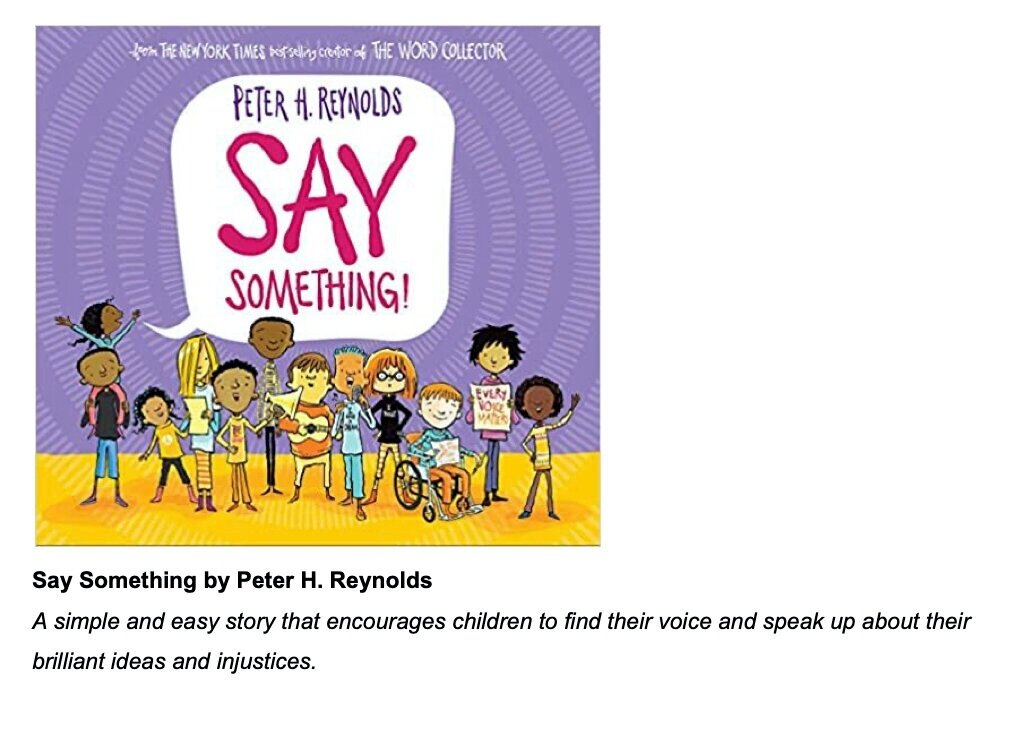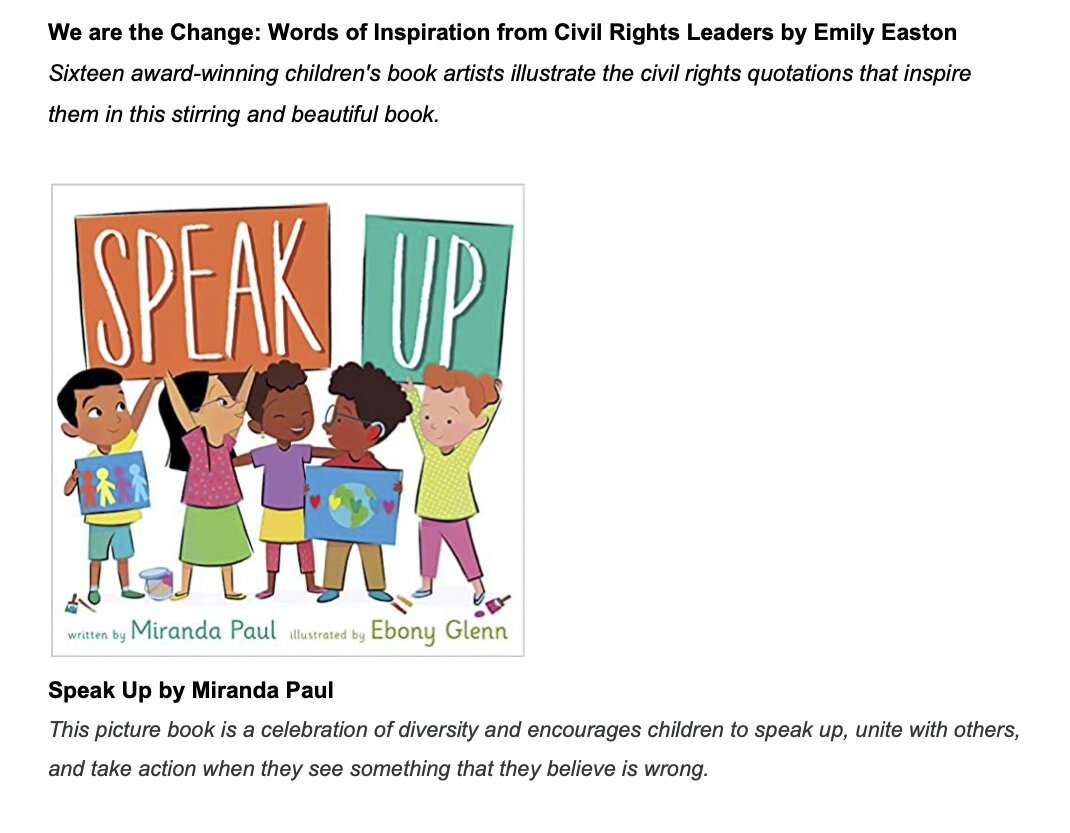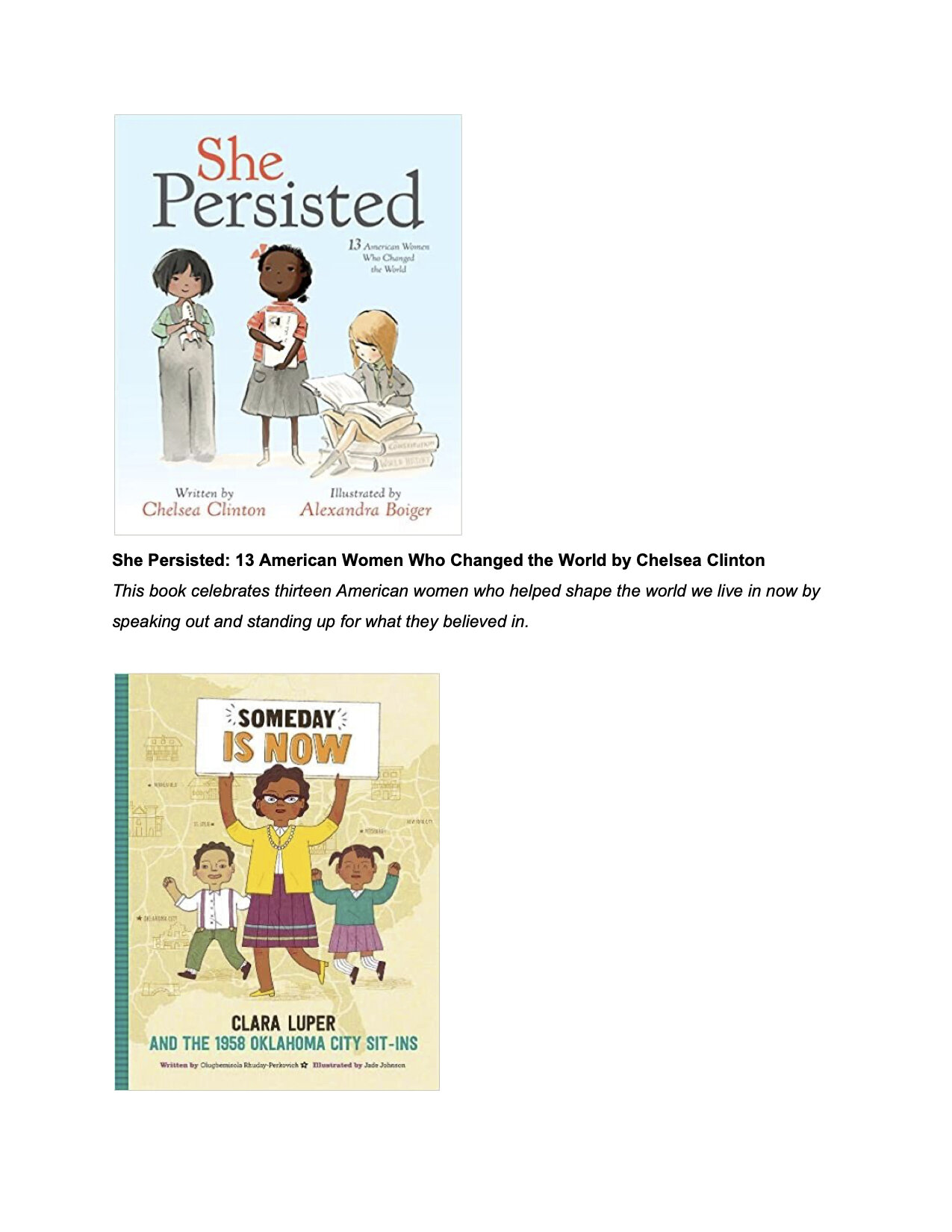As with all scary times, it is the work of the parent and adults to create a sense of safety for children. You can tell your children- “I will always work to keep you safe. Your teachers and the parents at Nia House are also people in our community that will keep you safe. Lucky us! We have so many people to love us and keep us safe.”
Thankfully, Berkeley/Oakland is currently not experiencing an imminent threat of wildfire danger. Though we likely all know friends and family that are impacted. All of us are under these smokey skies and it impacts our personal sense of safety and wellness. This is also true for our children.
The following article is specific to wildfire, so it is not totally relatable for all in our community. Most of us are not confronting evacuation, so this would be an unnessary and anxiety inducing detail to share with children. We can likely substitue fire with smoke to better contextualize or relate to the article’s content.
By Resa Hayes, MA, NCC, LPC
This is a difficult time for our community and many want to know how to help and what to say. Parents may be asking how to talk to and comfort their children, and we want to provide some guidance. Our children, just like us, wonder about safety, belongings, animals and friends. We can help our kids by giving them a better understanding of wild fires, their place in the world, and how this disaster, in particular, is being handled. Our children have likely heard about it on television, from friends, through conversations taking place around them, or even seen the destruction first hand. It is important to take some time to listen to them and help them process these events. Please don’t just assume your child is doing well, or that you can protect them from the fear we are all experiencing.
Here are some tips for talking to them and helping them understand the events:
Be Proactive in Talking to Children About Wildfires
Don’t shy away from having a conversation with your children about the fire. Arrange a time that you can engage in a conversation with them, uninterrupted and without distraction. An easy conversation starter can be, “I bet you have some questions about the fire and I would really like to hear them. Can we sit down and talk about it a bit?”
Assess what your child already knows (or doesn’t know)
Before talking to your child, ask him/her questions to help you understand what she/he already knows. This will help you understand her/his concerns, questions, feelings and even misconceptions.
Listen to your child’s questions with curiosity rather than with the urge to immediately soothe
Children will likely have many questions when a natural disaster occurs. “How does a wild fire happen? What happened to the people living in Napa (Big Basin etc. editited by NH) ? Will it happen to us? When will our house be safe?” Normalize this curiosity and concern by saying things like “I can understand why you would want to know that. That’s a good question.” When you answer use a calm, reassuring voice. Use simple, clear, consistent language. After answering, check in with your child to make sure he/she understood. If your child still does not understand try different, but still concrete, easy-to-understand language, until your child grasps the concept.
Normalize the curiosity and concern
Say things like “I can understand why you would want to know that. That’s a good question. Let me try to help you understand it a bit more.” Let them know that their questions are appropriate and important. Be prepared to repeat information and explanations several times. Some information may be hard to accept or understand. Asking the same question over and over may also be a way for a child to ask for reassurance.
Reassure your child to help him/her feel safe
Inform your child of your family’s safety plan in case of a wild fire. For example: “Mommy and Daddy have a plan to keep us safe if there is ever a fire near our house. The fire department and safety personnel helped us carry our plan out yesterday and it worked well.” Having fire drills once per year can also reassure your child that if another fire were to occur, she would be safe. You can also express the skill, courage, and commitment that our firefighters and safety personnel are displaying at this time. “Last night the fire was very dangerous, and the firefighters were still able to keep our community safe. They will continue to do this, they are working right now to see what needs to happen next to keep us safe. They are experts at their job and mom/dad trust them.”
Demonstrate calm
Children often pick up on their parents’ feelings. If you seem panicked or anxious, your child is likely to react in similar ways. Model a calm, matter-of-fact demeanor to show your child that your family is safe. If you need support yourself, don’t be afraid to reach out to family and friends. It can be helpful to have this kind of separate space to discuss your own emotions.
Be honest with kids when talking about wildfires
Honesty is key when answering questions. Some parents may want to keep some information from their children to protect them. They might say, for example: “The fire didn’t hurt anything” or “The fire was always under control.” This risks your child hearing about these details elsewhere. This could confuse your children and lead them to conclude that they cannot trust what you say. If you do not know the answer to a question, do not hesitate to tell your child. You can even look for answers together, which can also help your child feel safe and comforted.
Explore your child’s feelings and provide validation and comfort
Children may feel a variety of emotions, such as fear, confusion, anxiety, guilt, and sadness. Some children may not openly talk about their feelings during this time, but that does not necessarily mean they are not thinking about it. When your child does share his/her feelings with you, provide empathy, acknowledgment, and validation. In an effort to comfort their child, some parents may inadvertently minimize their child’s feelings by saying things like “You have nothing to be scared of.” A better alternative is to empathize with her feelings first and then offer reassurance. One example is: “I can understand why you would be scared that our home could burn or we may have to evacuate without our pets. I want you to know that there is only a very small chance that would happen. And if something happens, we have a plan to keep us safe. Would you like to hear about the plan that we have made?”
Help your child feel part of the supportive community
Practice Gratitude to combat Fear. When it is appropriate, you may want to take your children to the fire station, or FEMA headquarters, to meet the heroes, express gratitude, and ask questions. This will help them feel like they are a part of the support. They may feel a sense of confidence and pride, they will see that we are in good hands, and they can experience the heroism of our community; emotions that can replace some of the fear and anxiety.
When in doubt remember these helpful words from Mr. Rogers:
When I was a boy and I would see scary things in the news, my mother would say to me, “Look for the helpers. You will always find people who are helping.”


